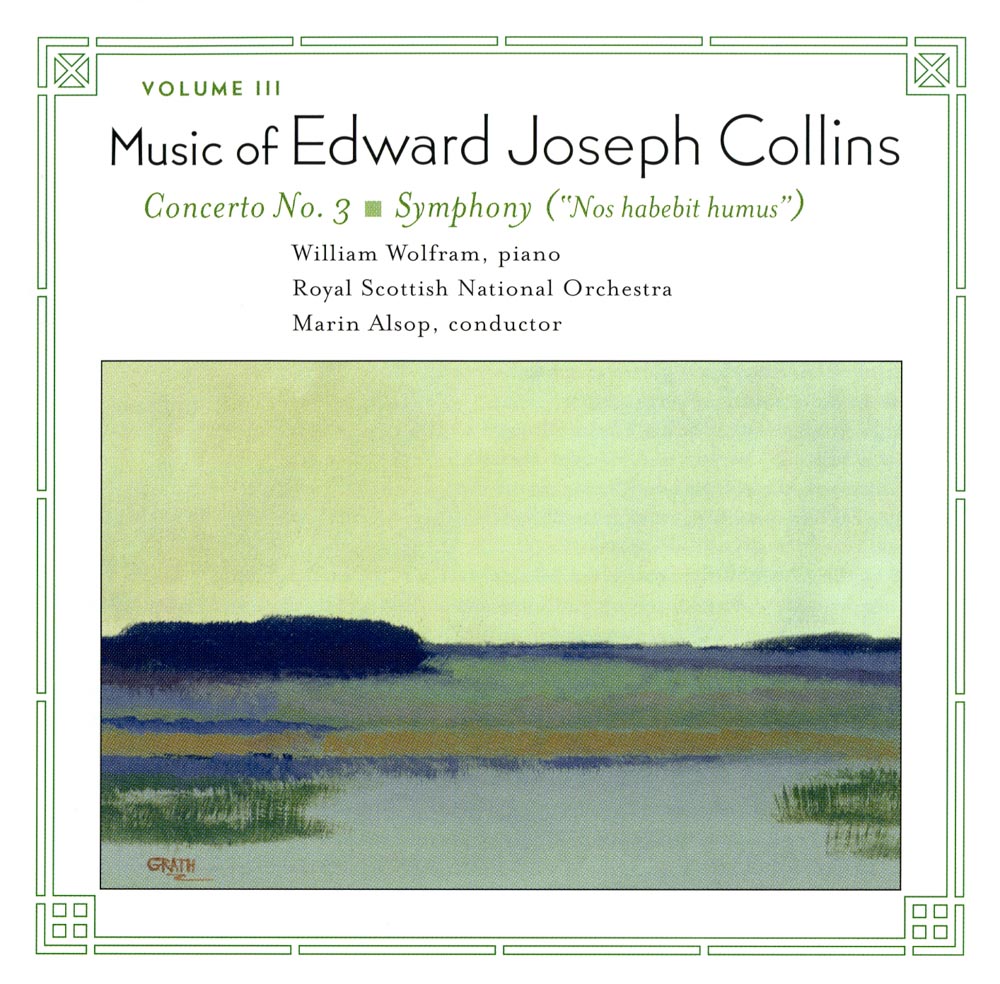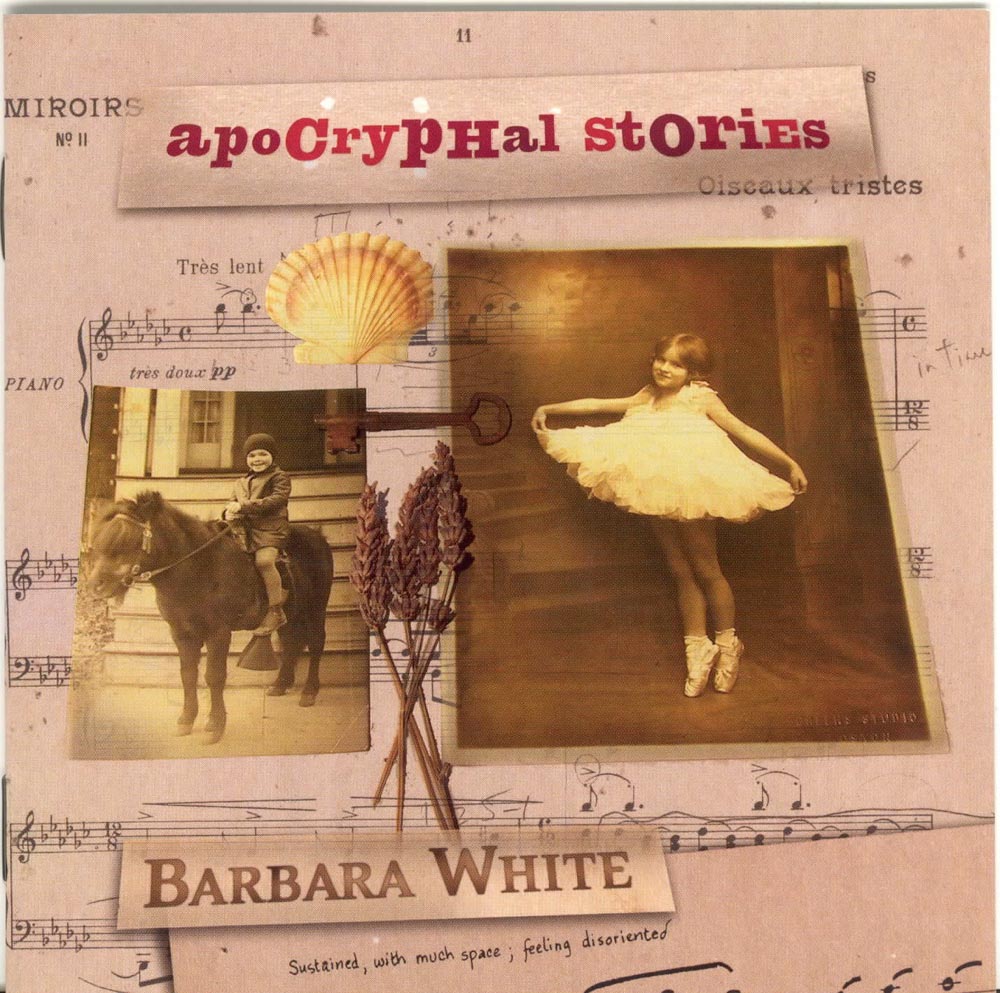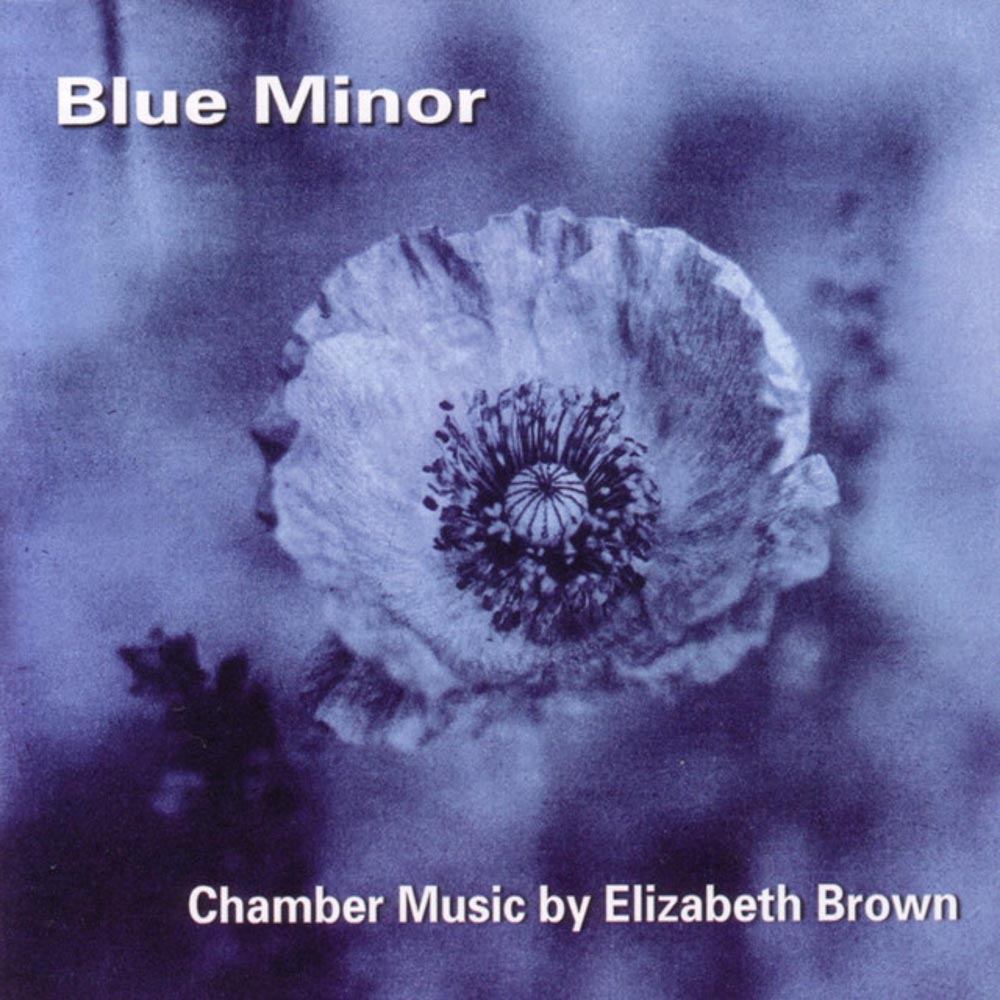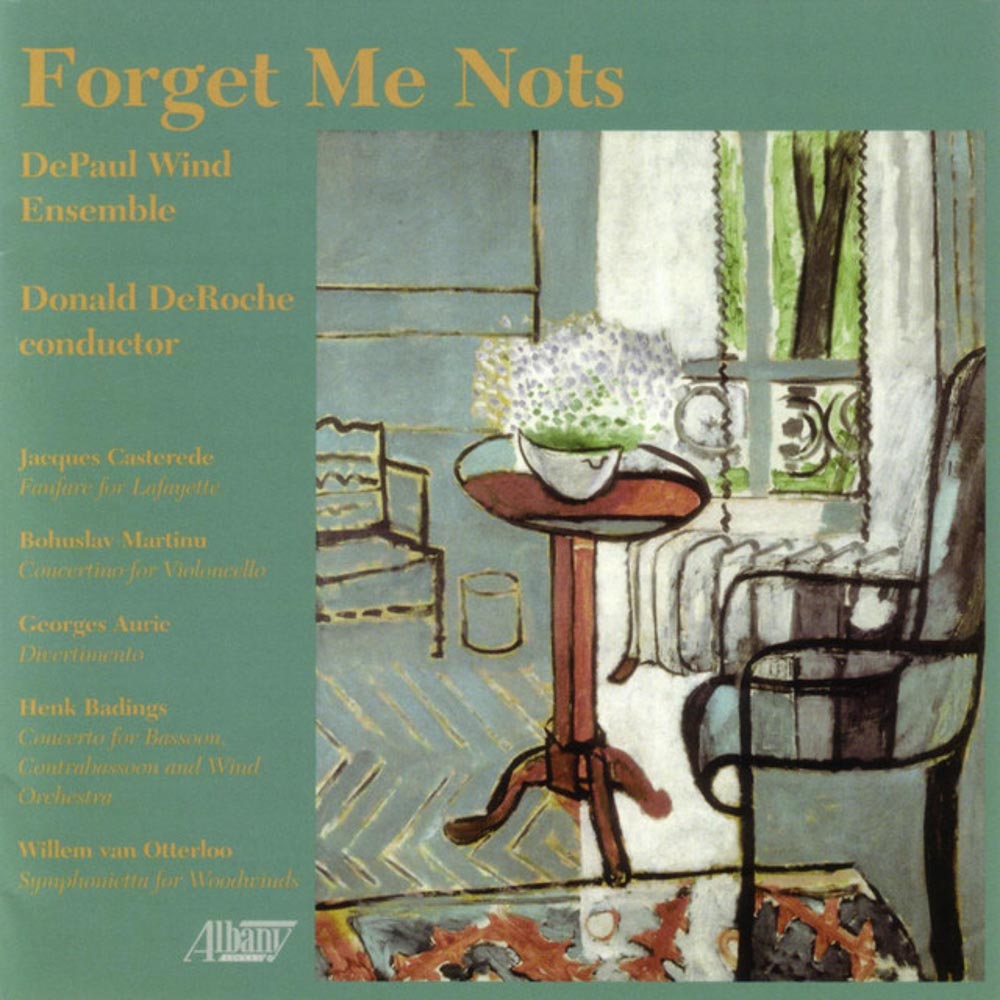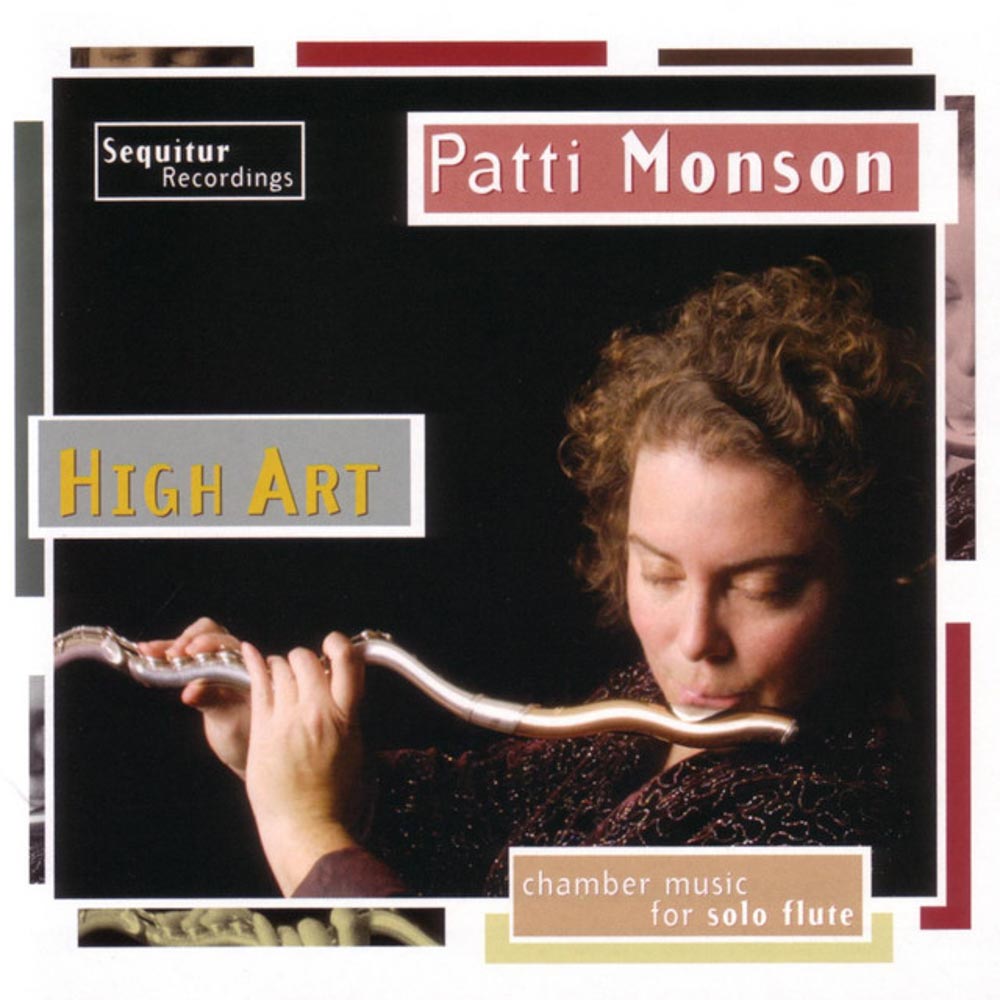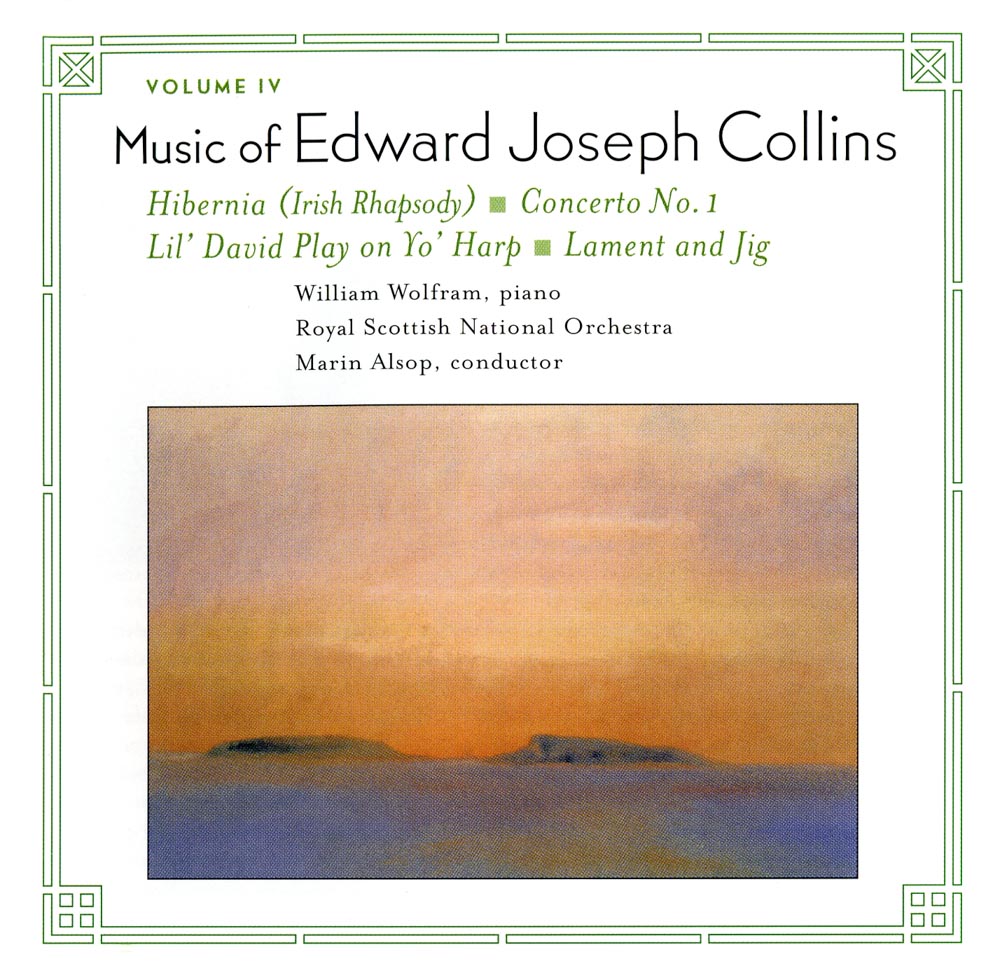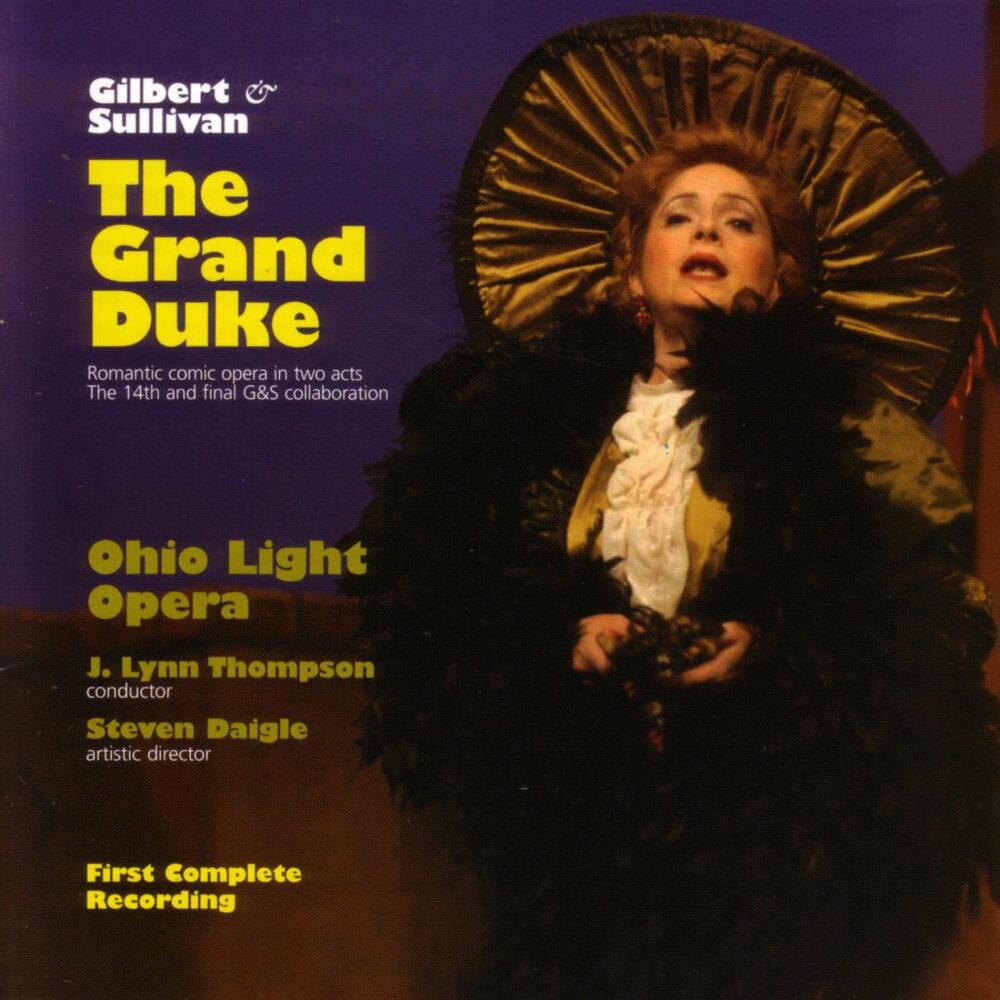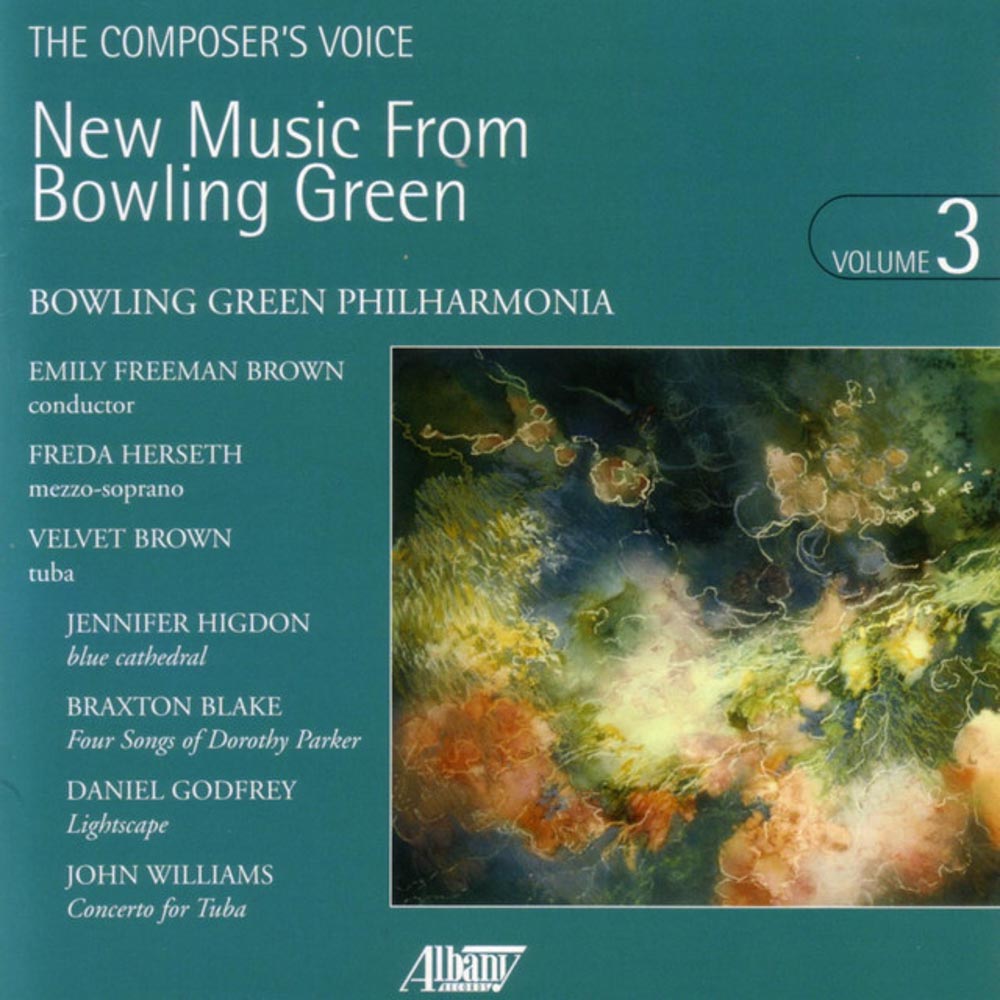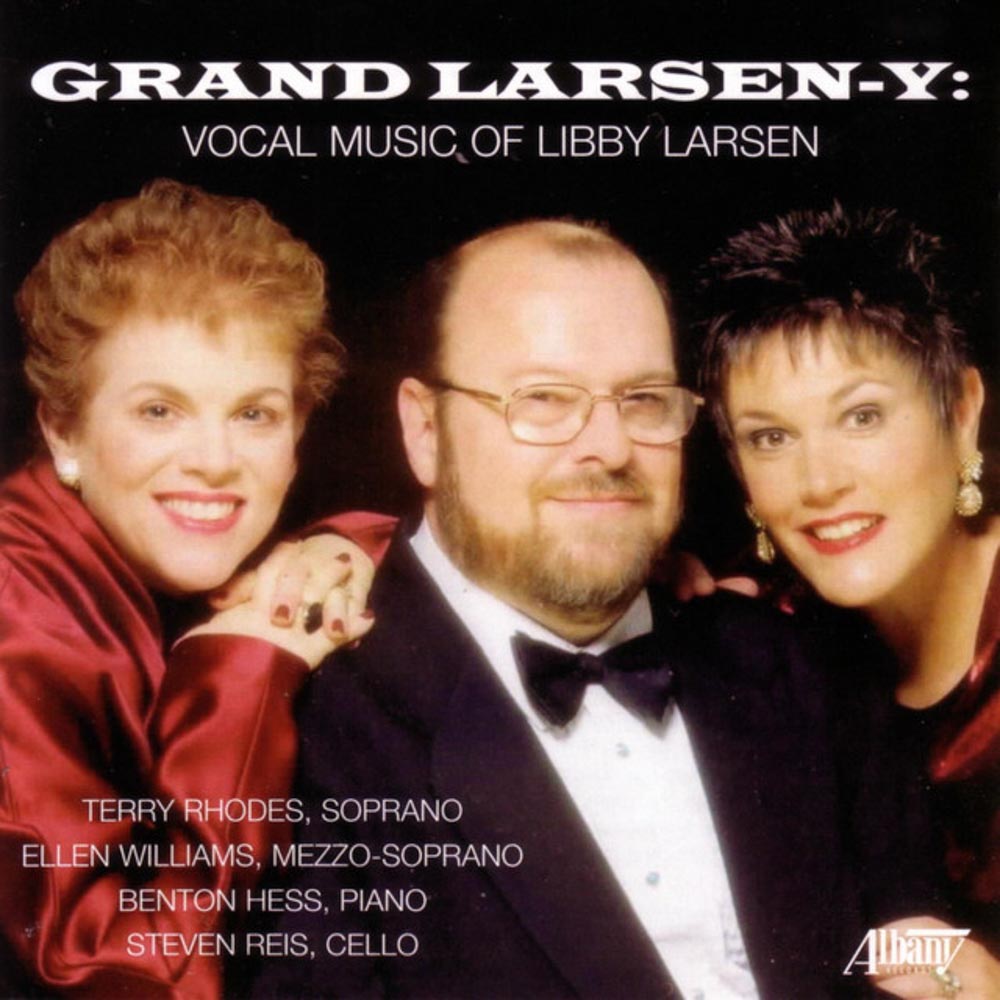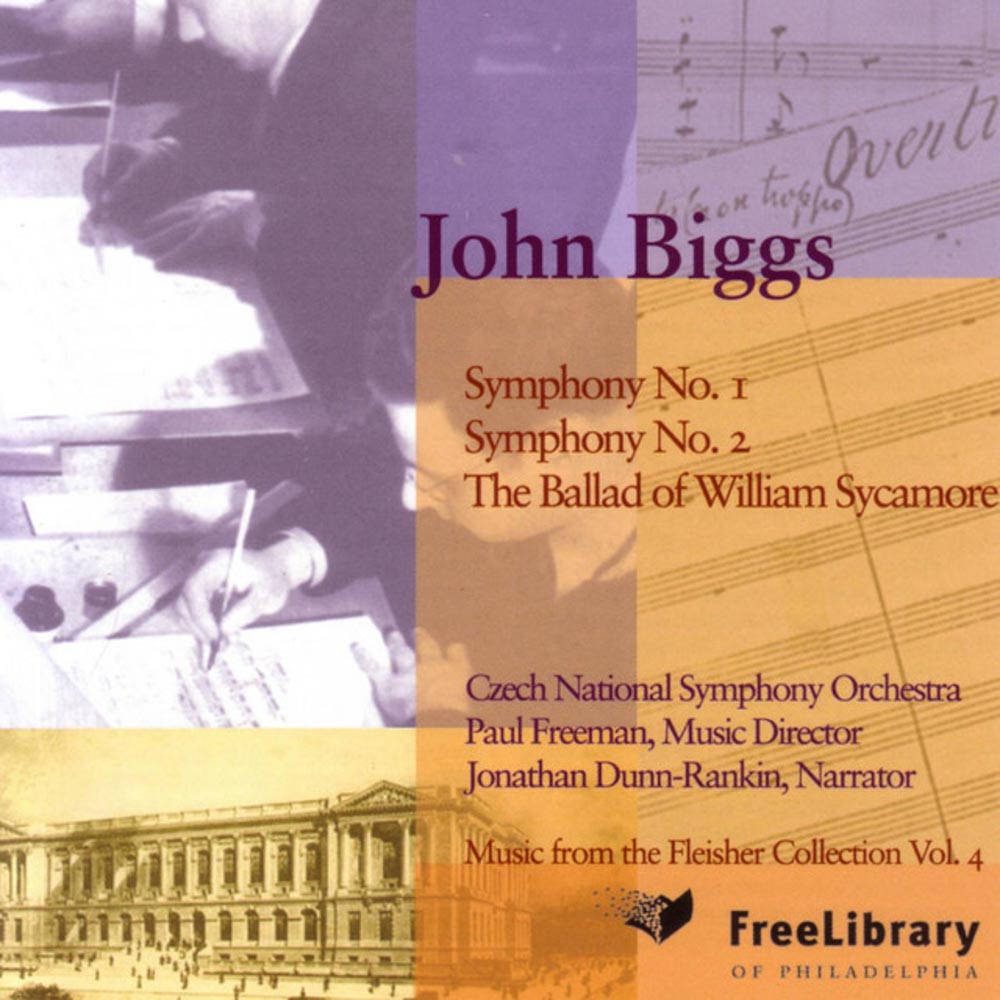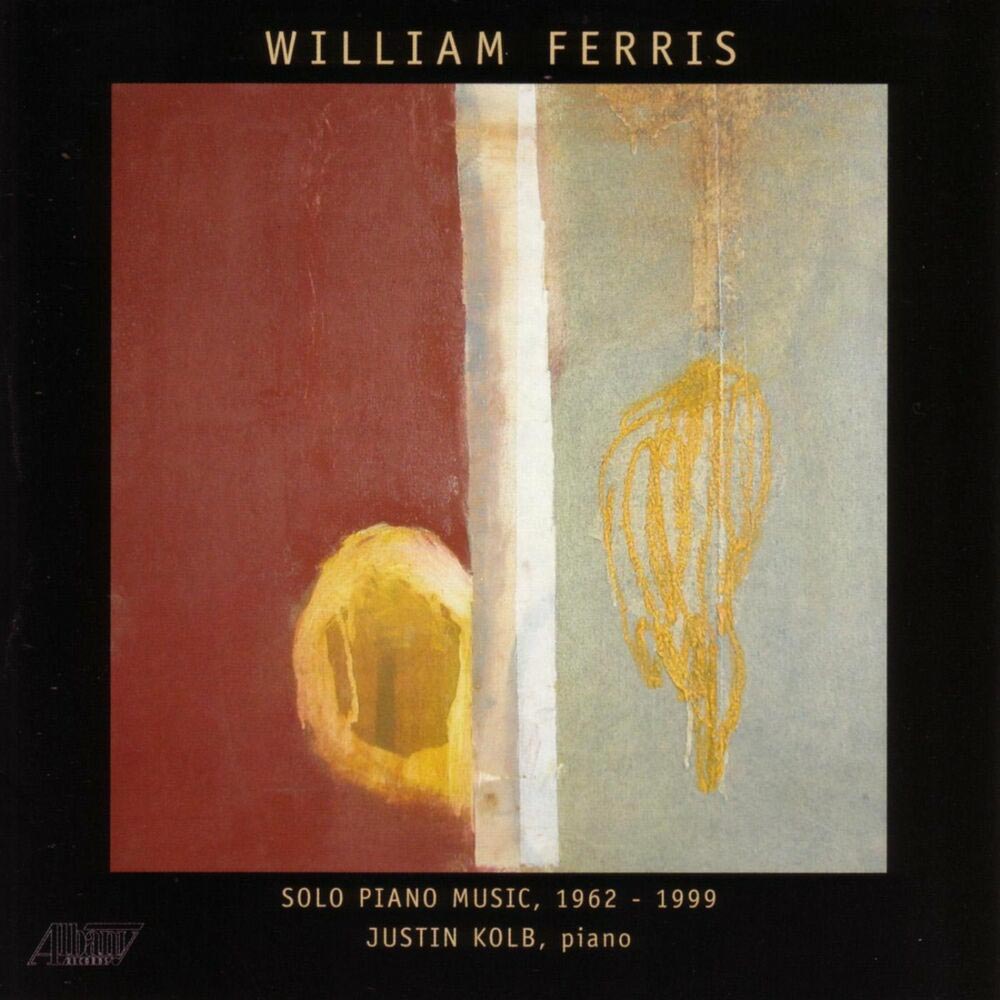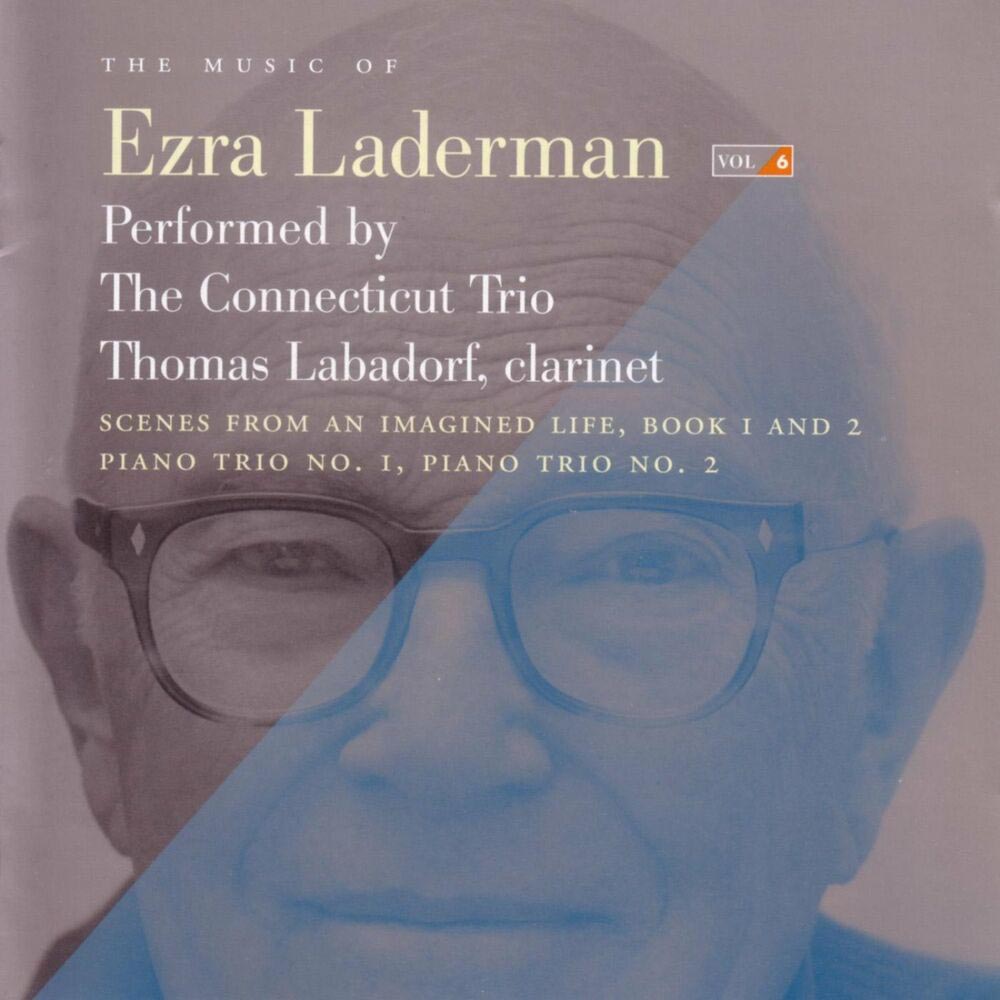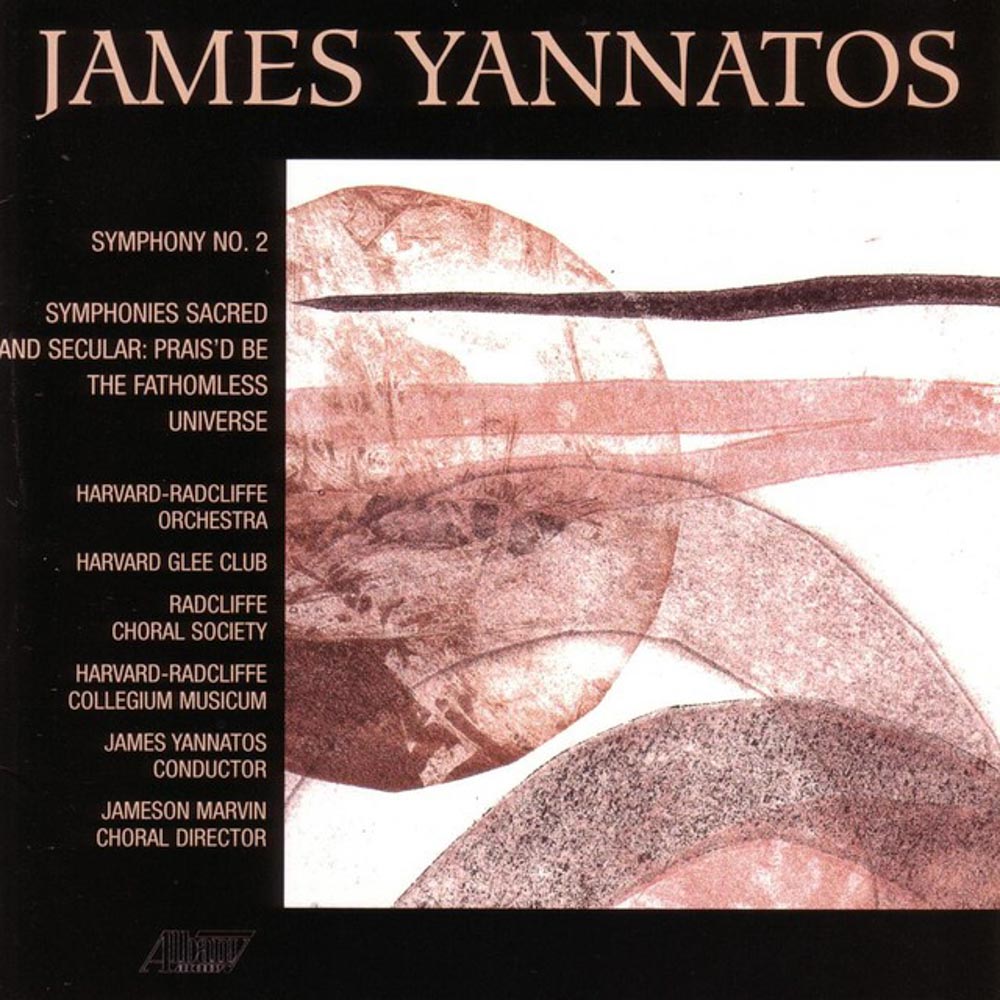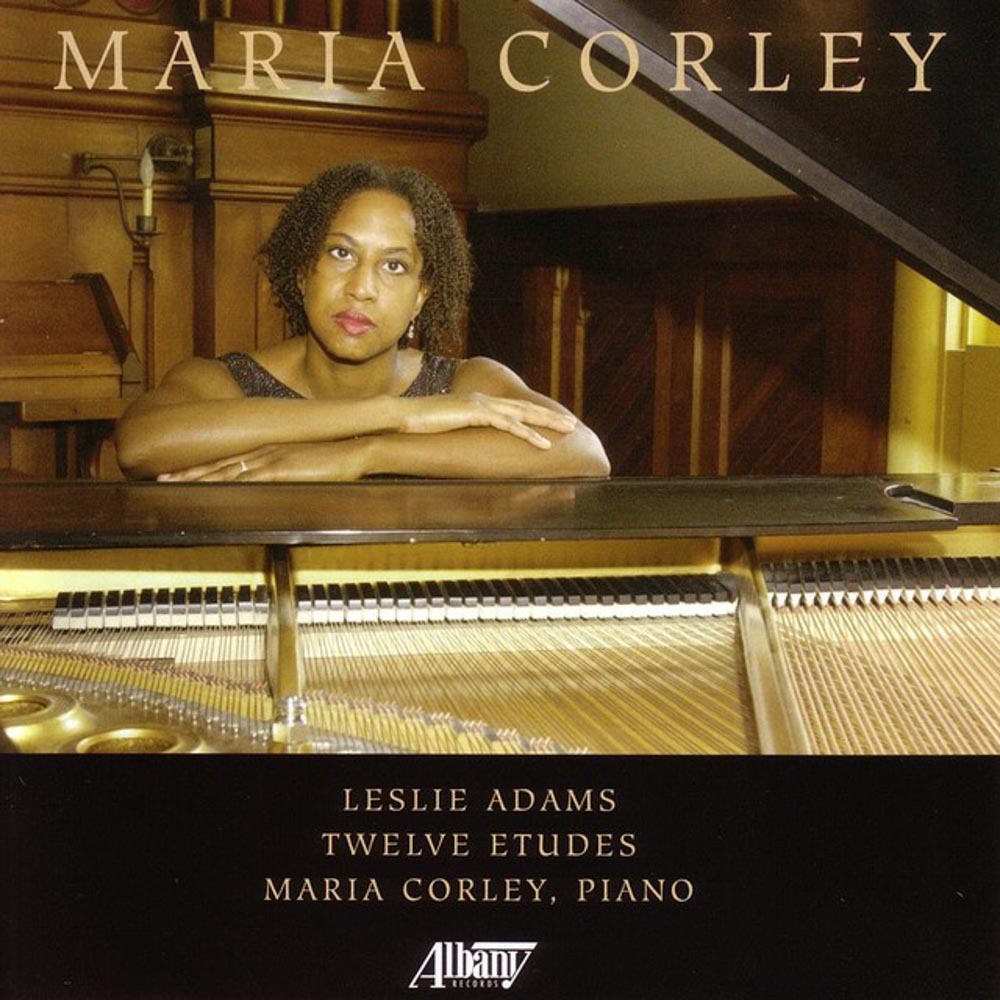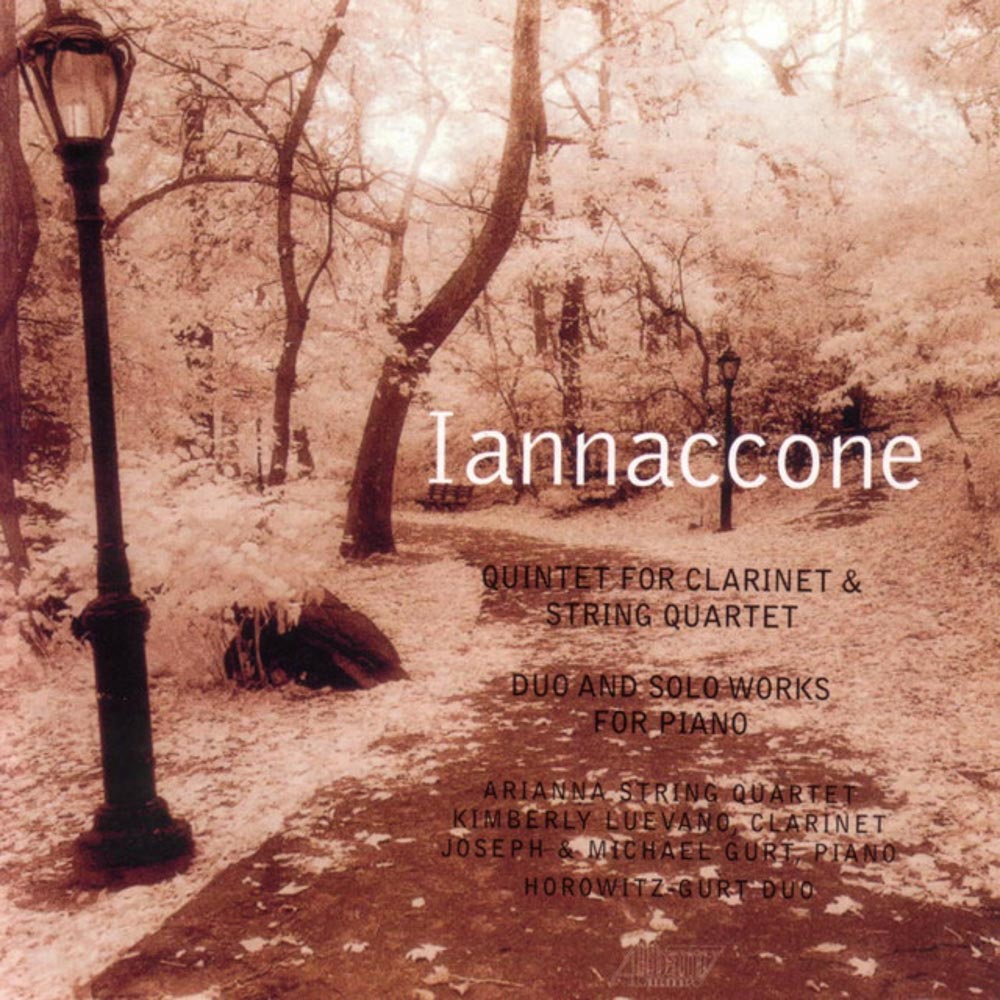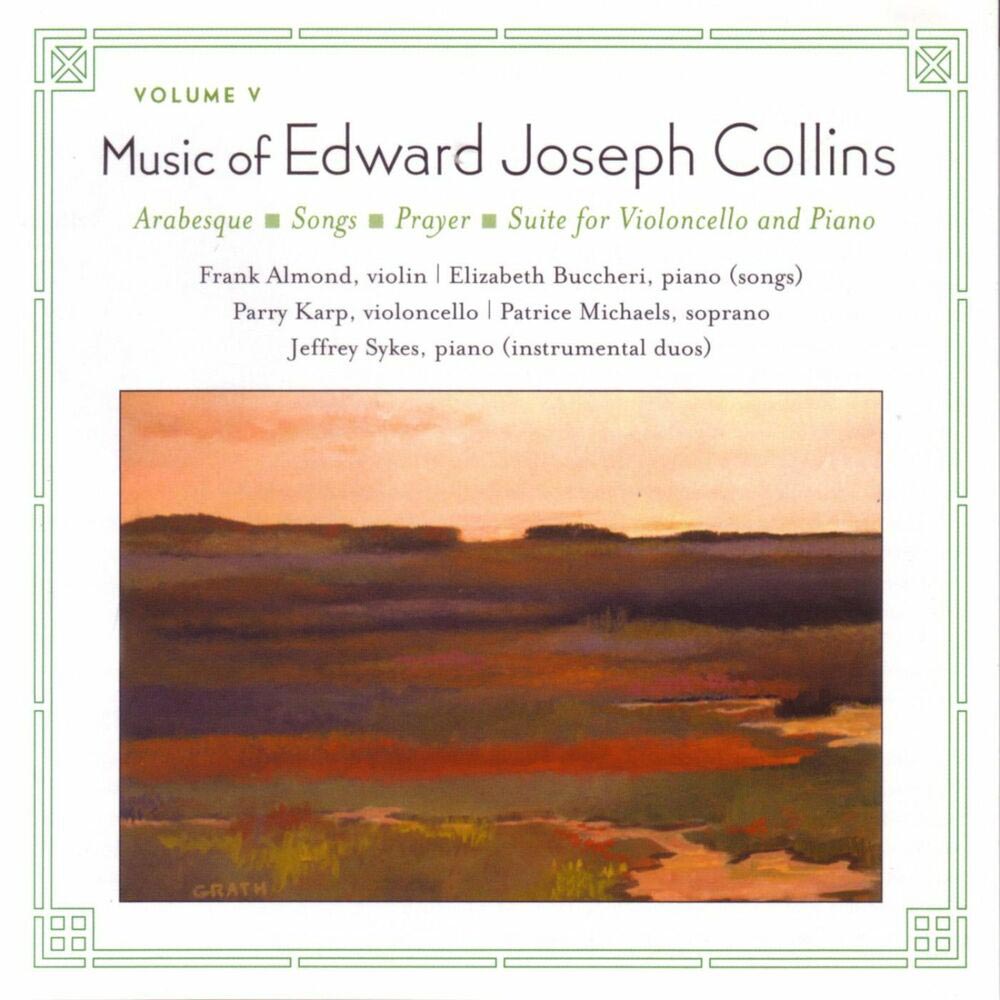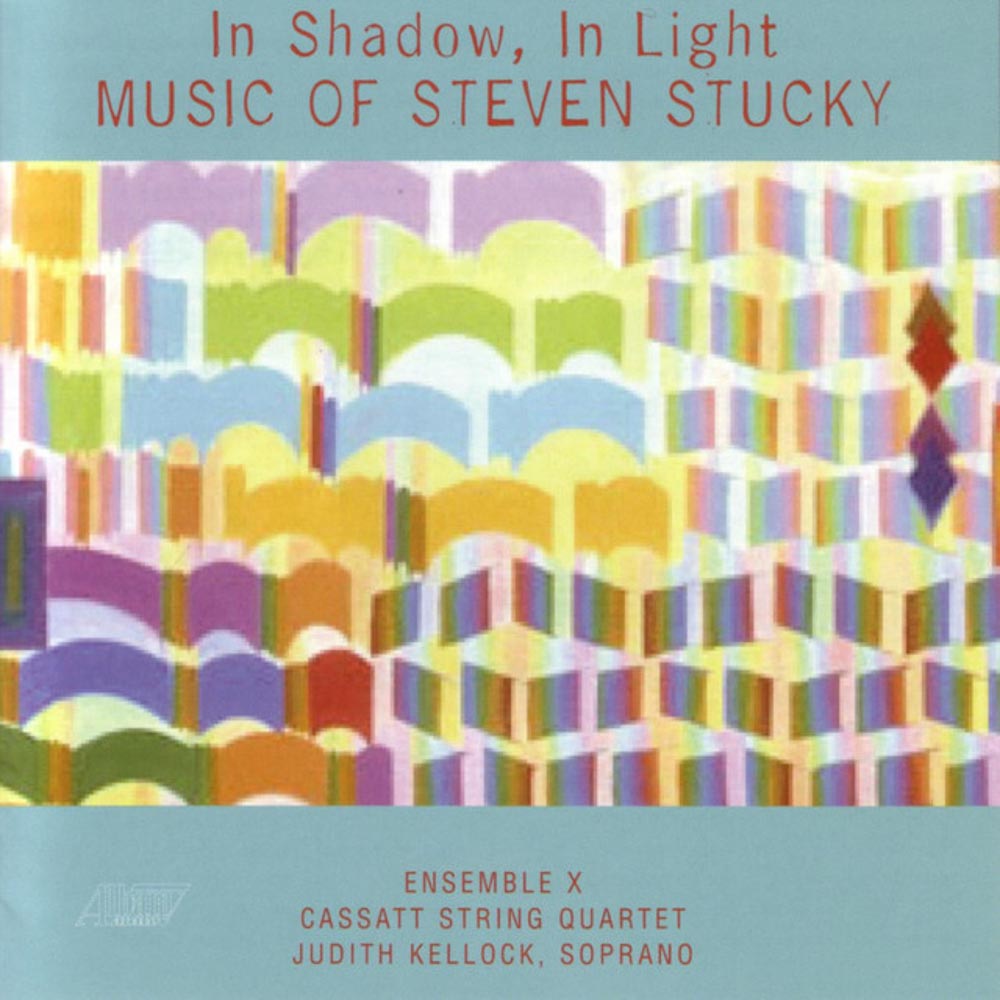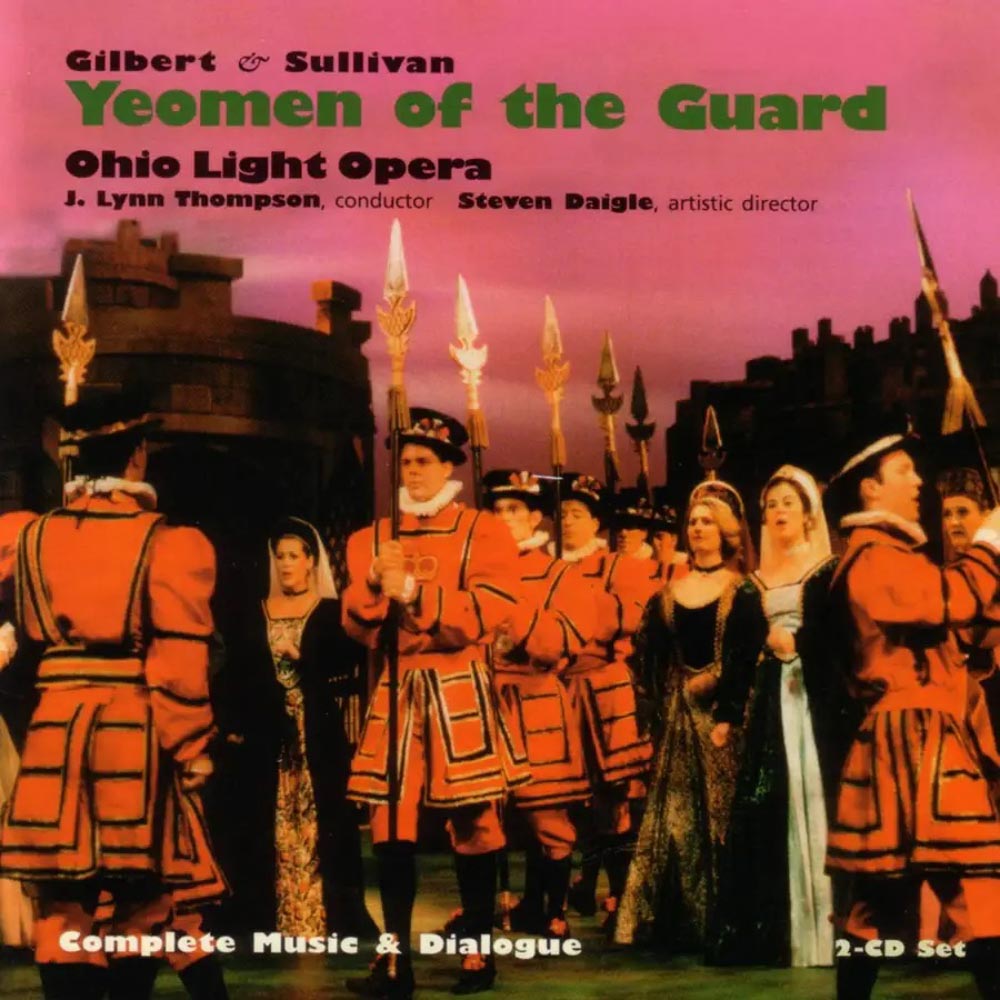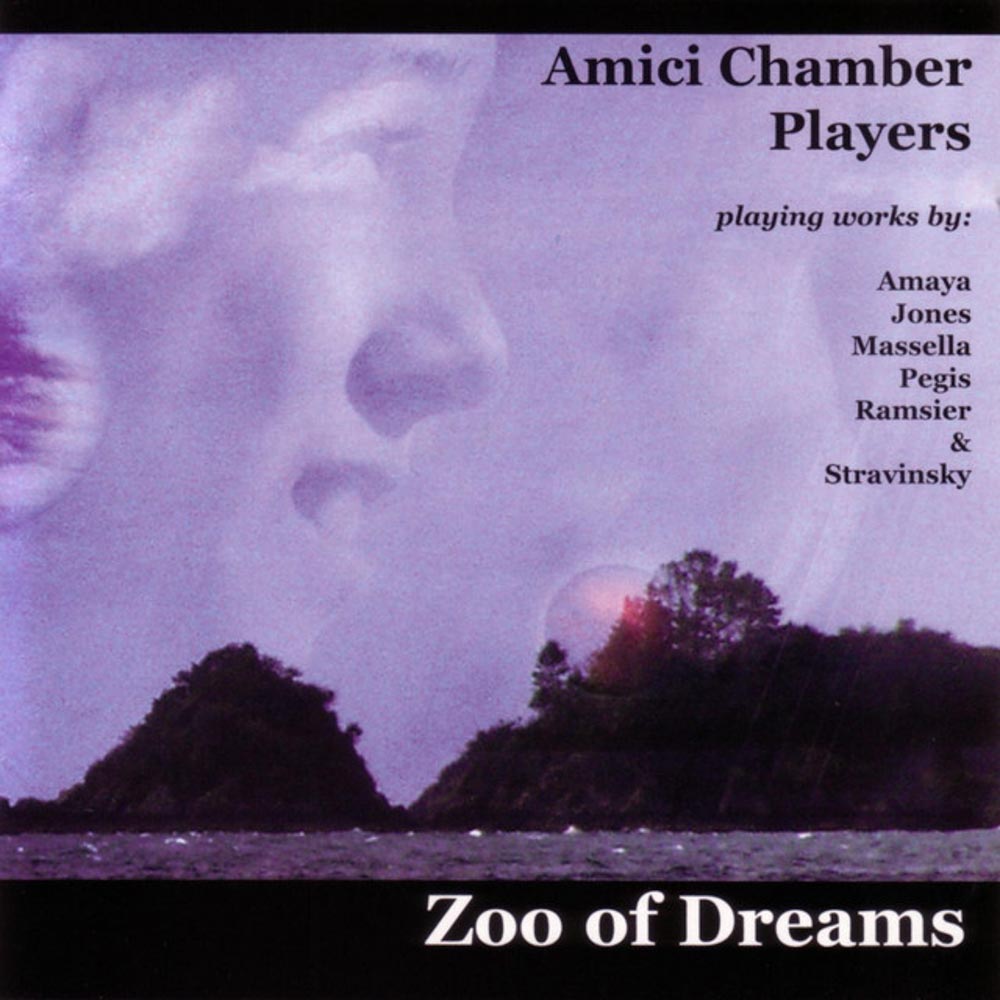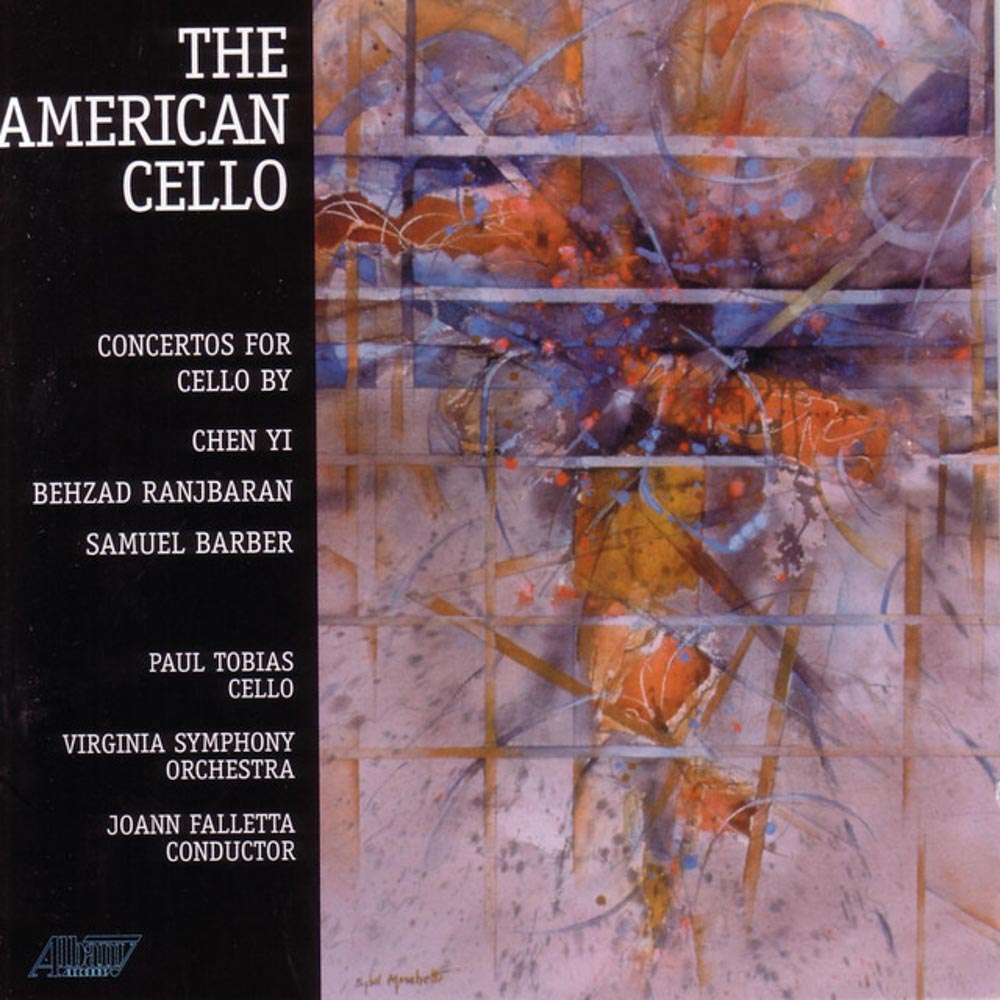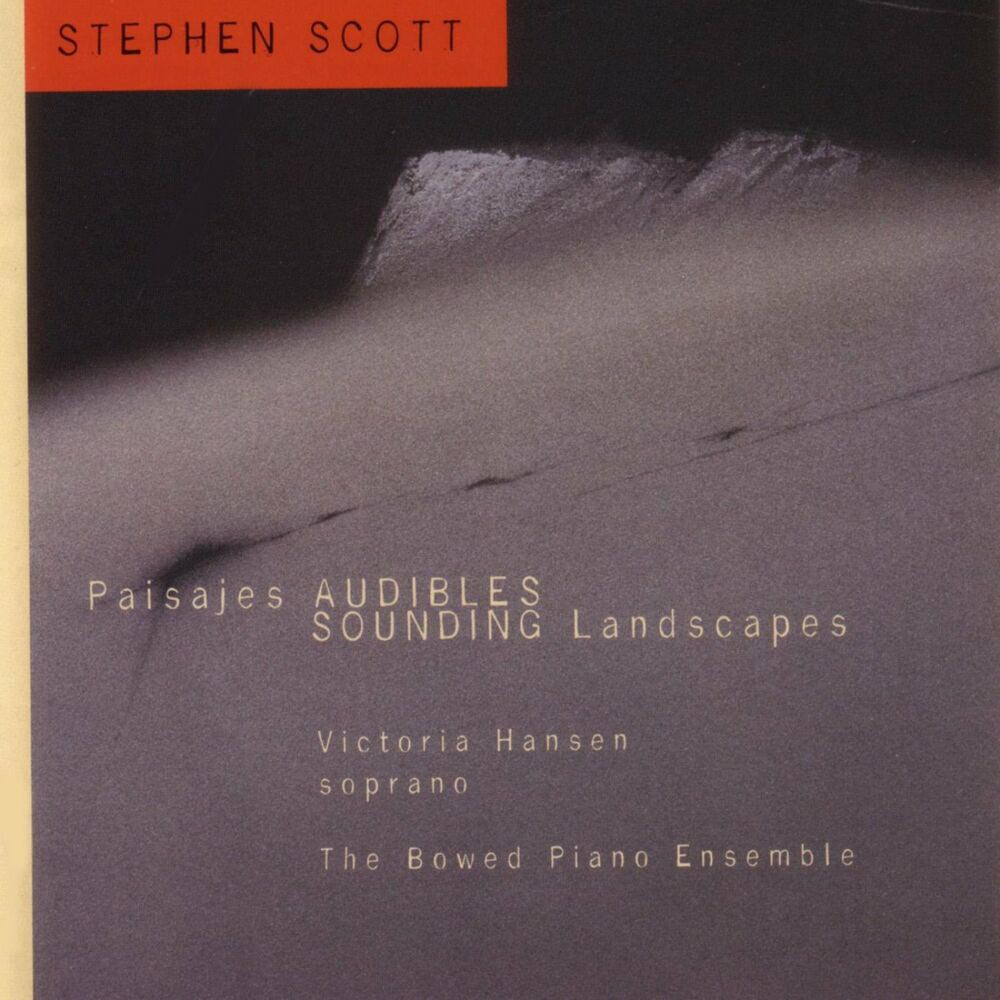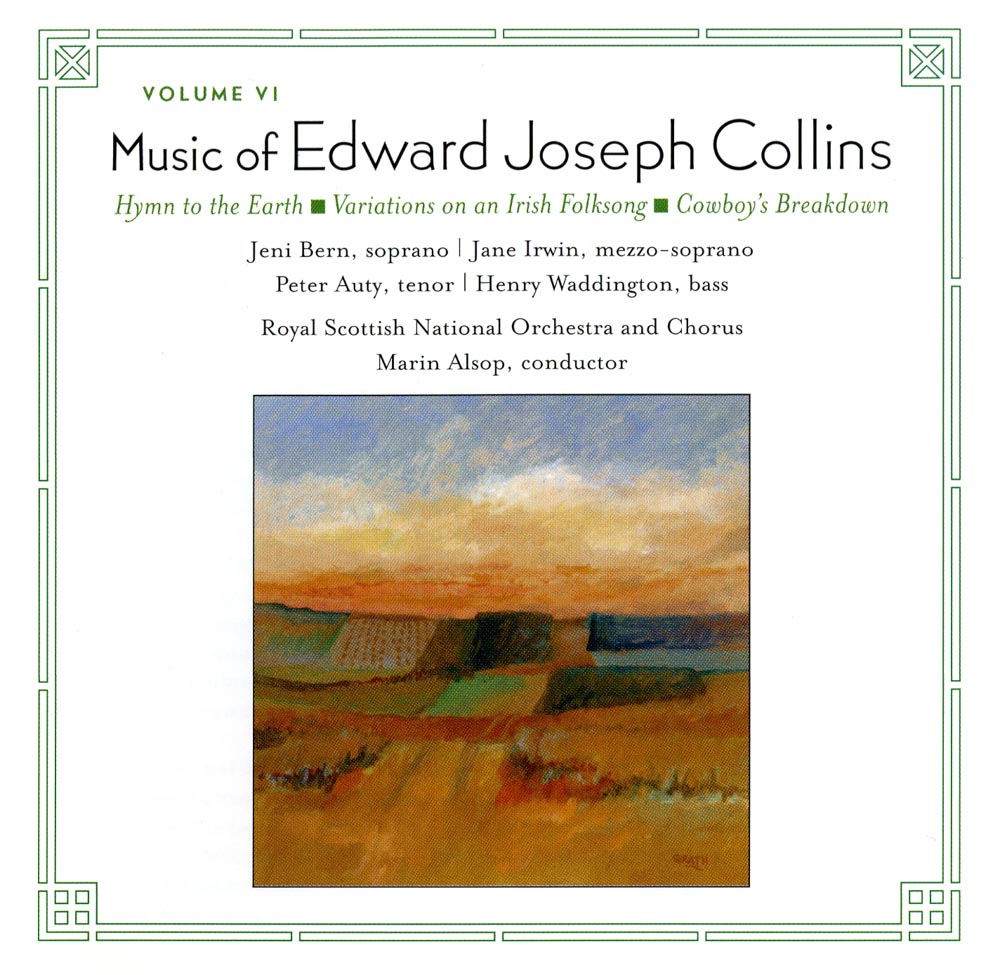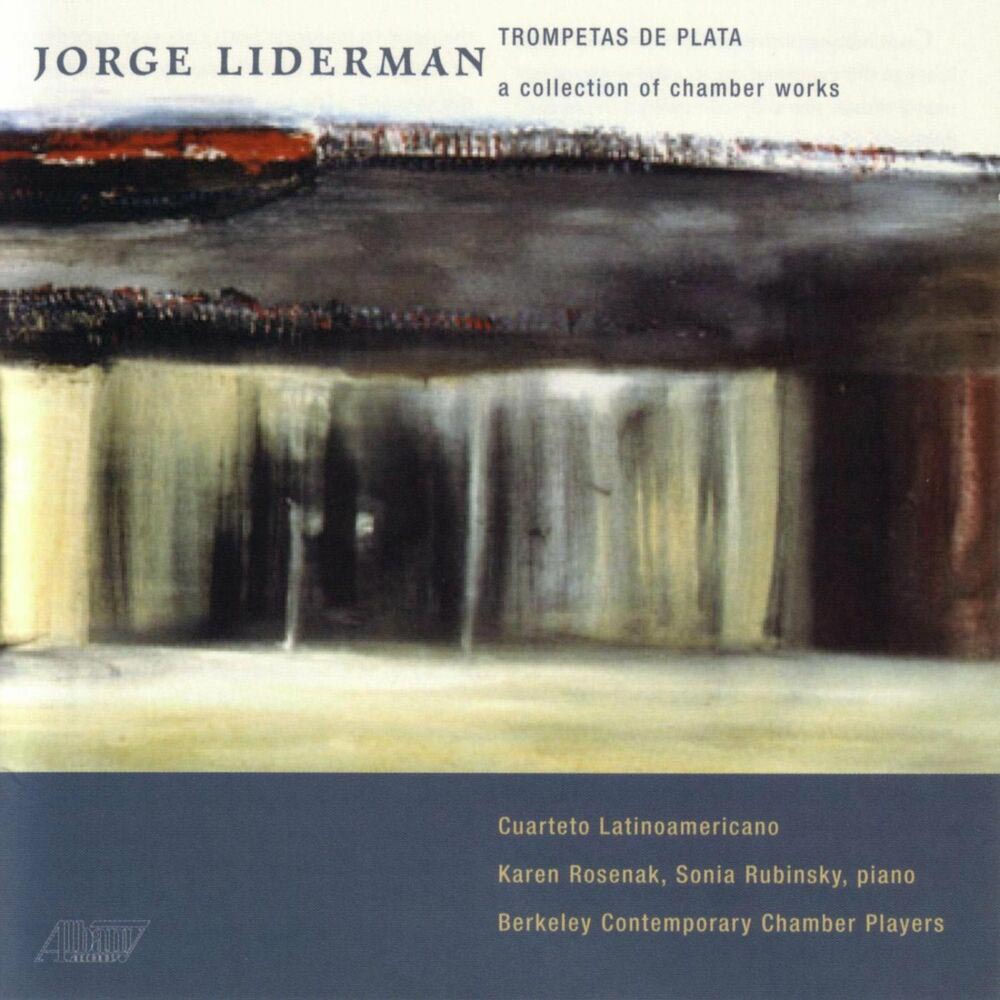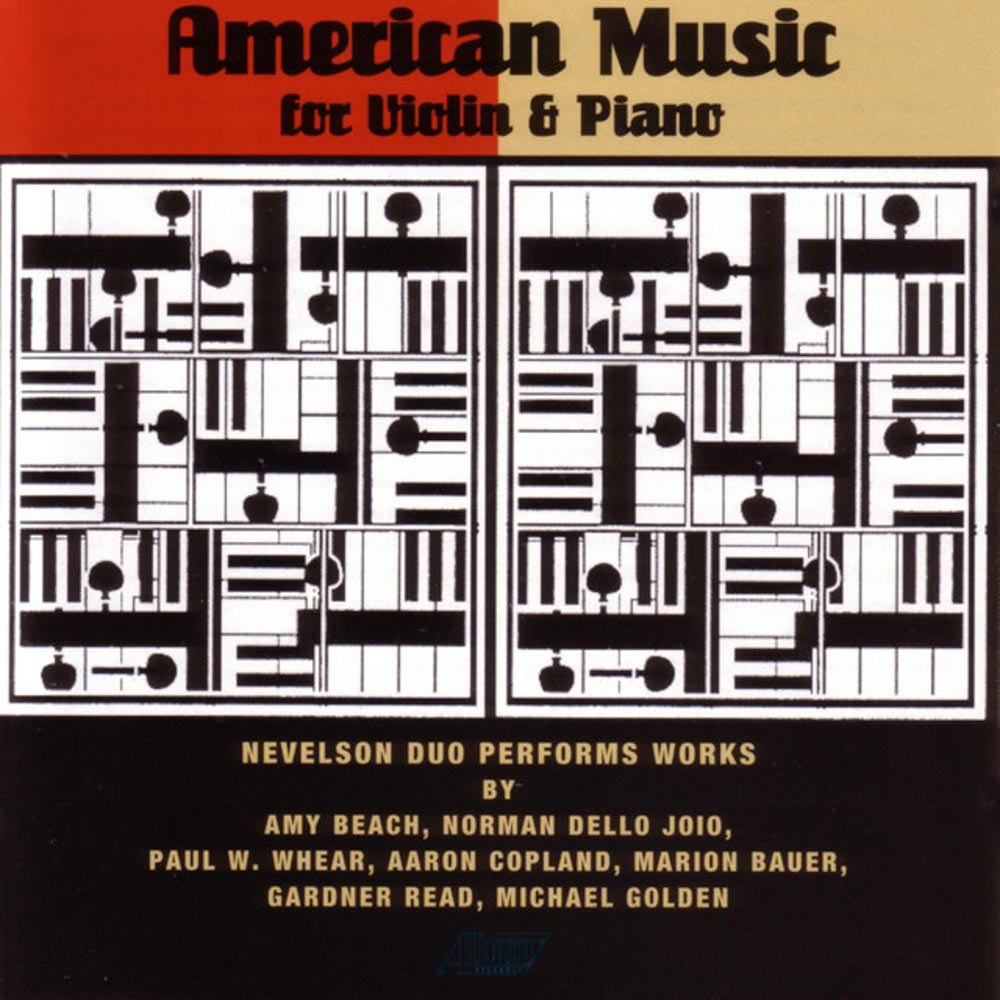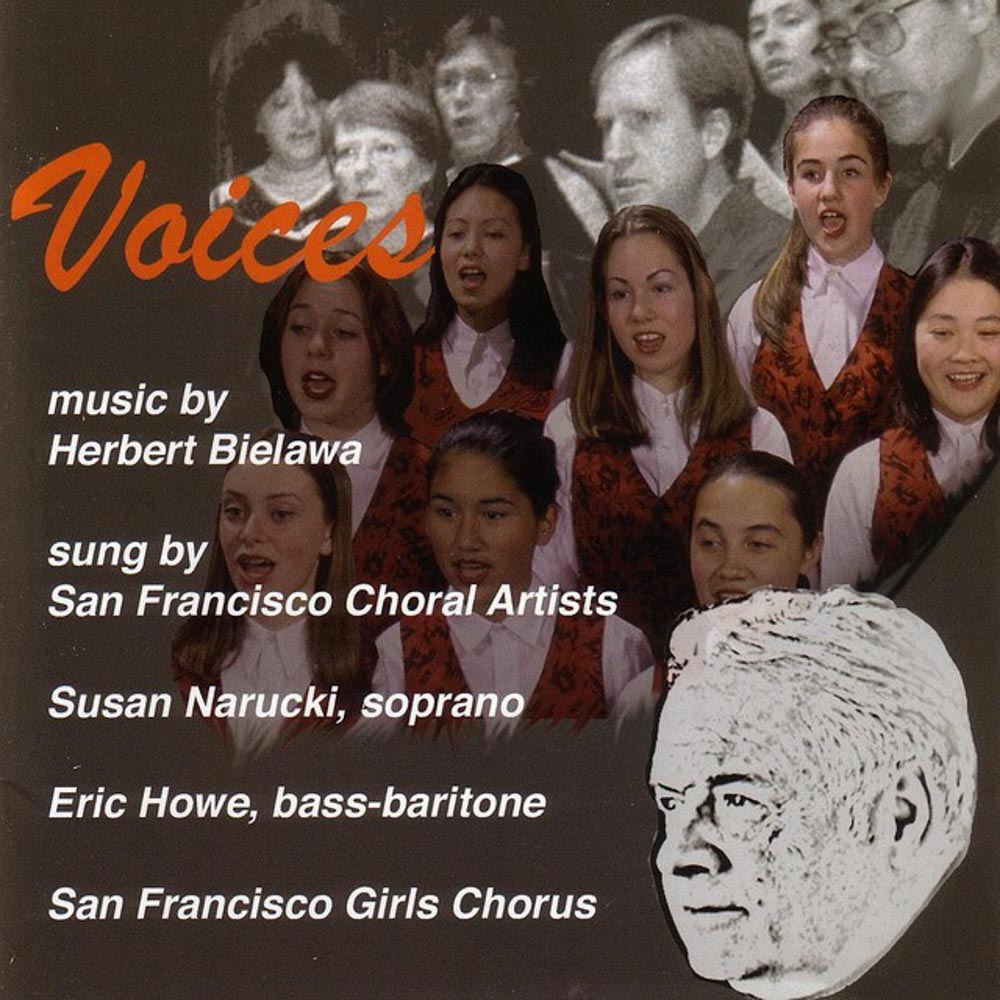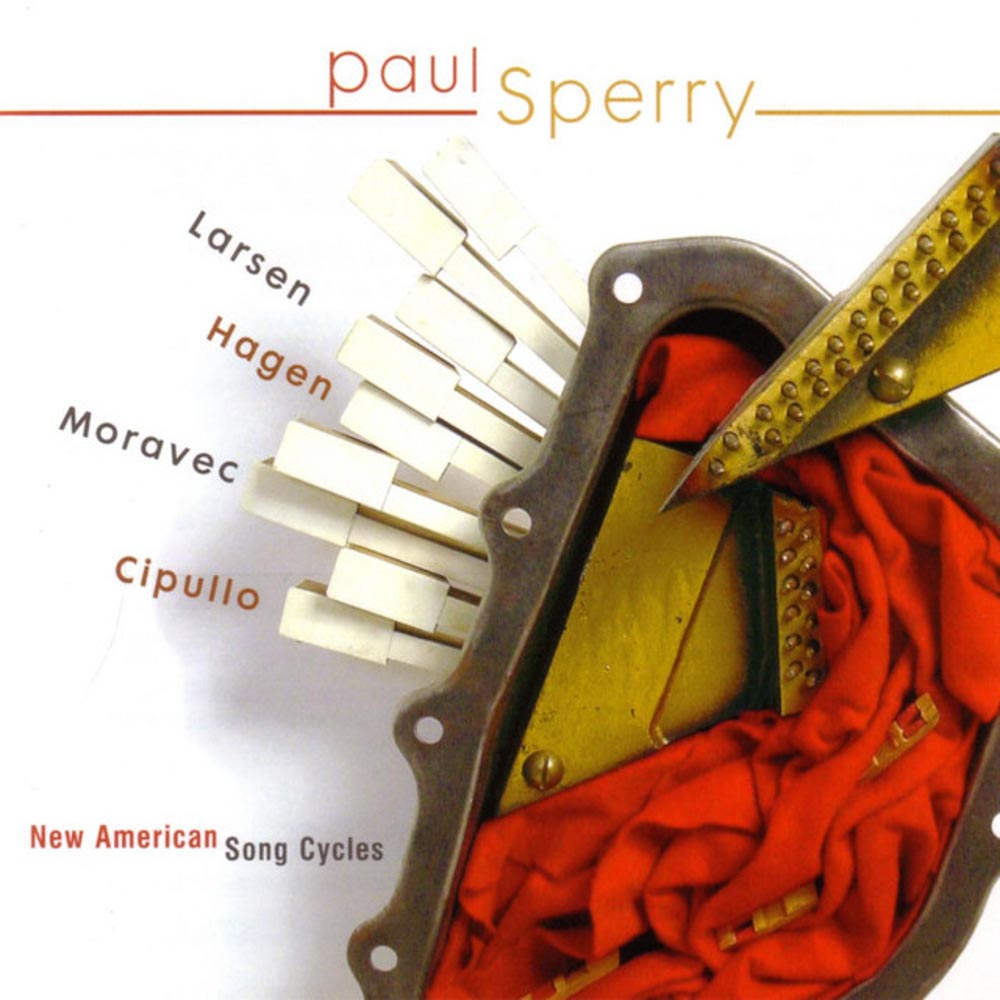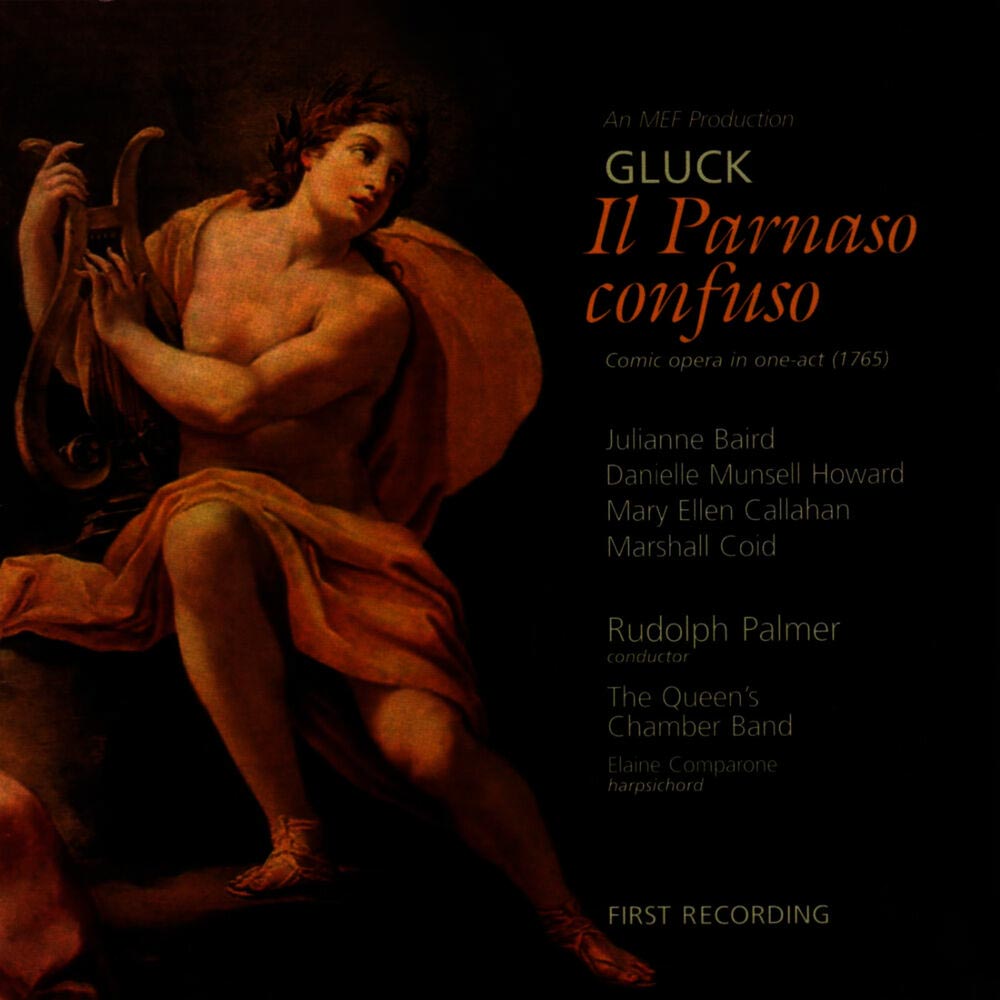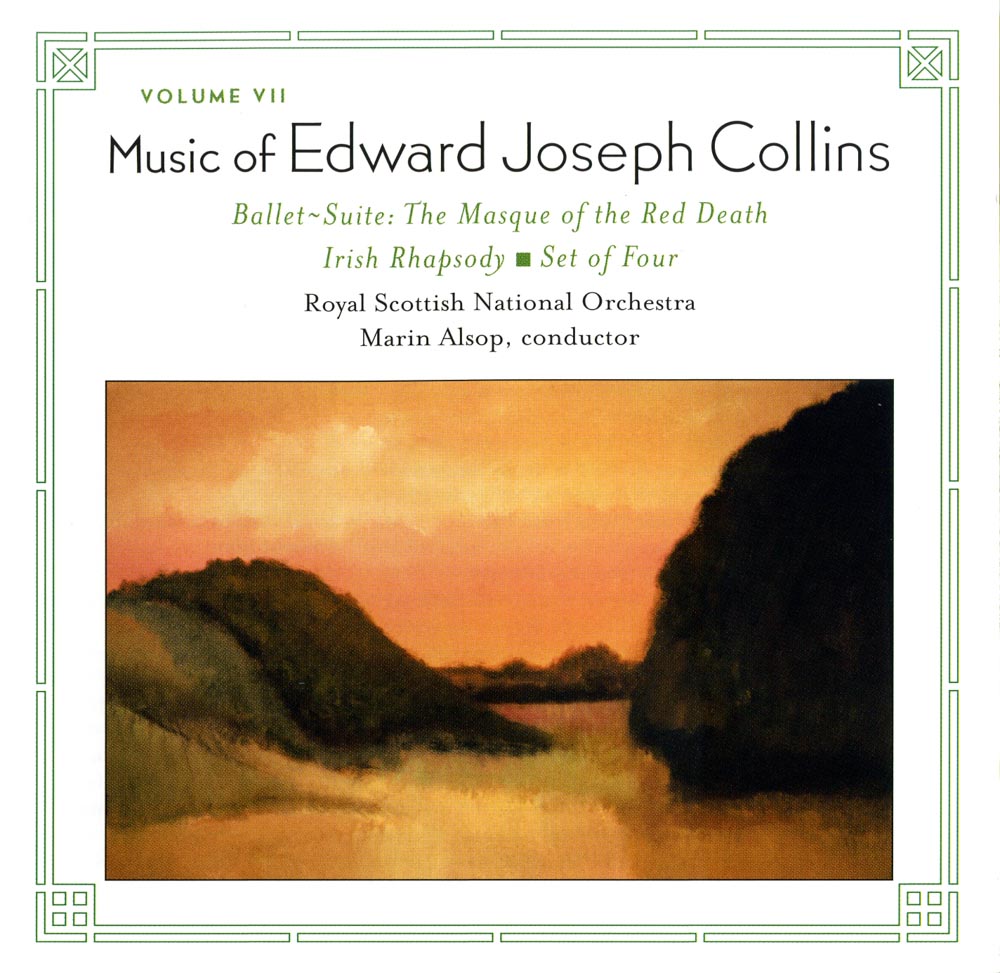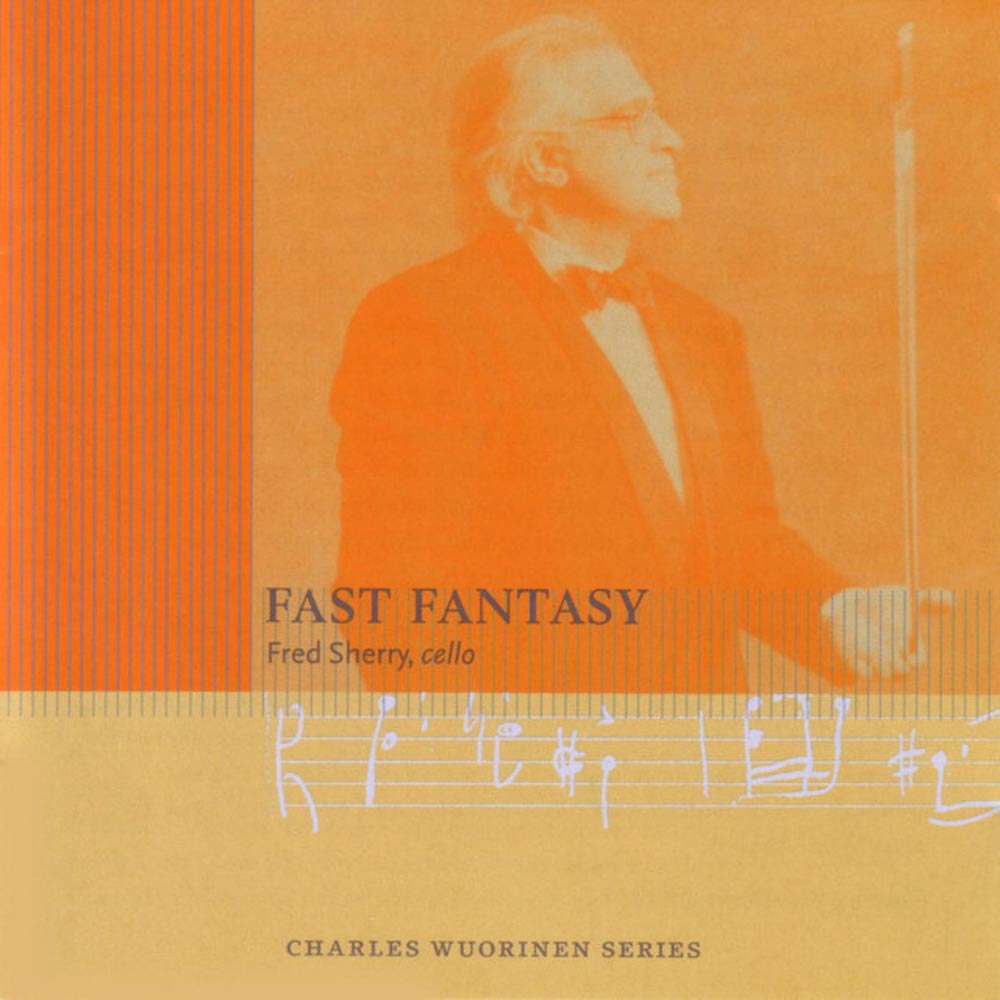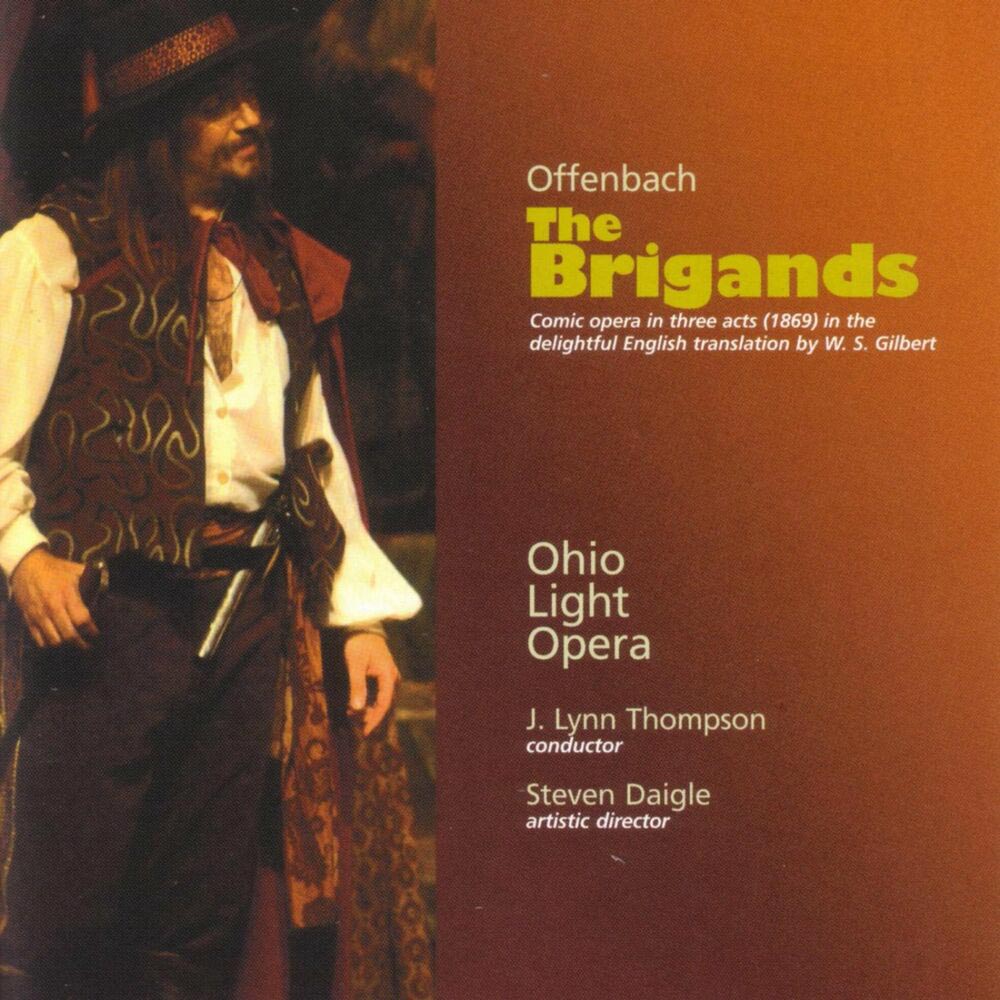Catalog #: TROY0625
Release Date: September 1, 2003OrchestralEdward Joseph Collins was born in Joliet, Illinois and was the youngest of nine children all of whom were musical. He studied first in Chicago with Rudolf Ganz and then in Berlin with Max Bruch and Engelbert Humperdinck, among others. He returned to the United States in the fall of 1912 and began to concertize. During 1913/14, he was appointed assistant conductor of the Century Opera Company in New York. In 1914, he traveled once again to Europe where he was engaged as an assistant conductor at the Bayreuth Festival, where his duties also included playing the timpani. In August 1914, the outbreak of hostilities in Europe necessitated his return to America. When the U.S. entered the War, he began as an infantry private, but soon rose to the rank of Lieutenant. When Collins returned to Chicago, he resumed his performing career and married a young voice student named Frieda Mayer whose father was Oscar Mayer, the owner of the Chicago Meat Packing Company that bears his name. Erik Eriksson, Collins' biographer has written: "The music of Edward Joseph Collins deserves closer attention and more frequent performance. Collins was highly original in his organization and employment of ideas, in the flow with which they were assembled, and in the unforced introduction of American idioms to works that were conceived with great seriousness of purpose. With strength of character and courage that must be admired, Collins composed music that also exhibits an endearing capacity to convey genuine and enduring emotion." See also TROY267 for more of Collin's music.
Catalog #: TROY0626
Release Date: January 1, 2004ChamberComposer Barbara White was born in Boston and was educated at Harvard/Radcliffe Colleges and the University of Pittsburgh. She is currently a faculty member at Princeton University, and she spent a recent sabbatical year as a Bunting Fellow at the Radcliffe Institute for Advanced Study. She writes: "Apocryphal Studies is a sonic scrapbook of sorts, a compilation and documentation of my musical memories. Anyone who has ever been haunted by a fragment of a melody knows how enduring such memories can be; yet by the time we hear a sound, it has already begun to decay. In assembling my memories into new work, I play in the field between these apparent extremes: ever presence and impermanence. Musical reminiscences are simultaneously lasting and ephemeral, palpable and immaterial, indelible and fleeting. The marriage of persistence and elusiveness recalls other familiar paradoxes, for musical fictions are untruths we choose to believe - lies that, like an apocryphal story, contain an element of psychic, if not literal, truth. The four works on this recording embrace pre-existing music, in ways that range from veiled allusion to explicit paraphrase to willful mutilation."
Catalog #: TROY0627
Release Date: December 1, 2003ChamberElizabeth Brown grew up on an agricultural research station near Camden, Alabama. She studied piano, sang in the church choir, and played mallet percussion in the school band until she started playing flute at 16, and fell in love with it. She attended the College Conservatory of Music in Cincinnati, then moved to New York and received a Master's degree in flute performance from the Juilliard School in 1977. In her late twenties she began writing chamber pieces for her colleagues, never having formally studied composition. Since then, there have been hundreds of performances of her music worldwide. Kyle Gann in Chamber Music Magazine writes: "Elizabeth Brown writes the only music I know of in which the flute might be playing "London Bridge is Falling Down" while the cello is sliding through a long glissando underneath, yet nothing feels incongruous. There's a kind of imaginary quality to her music. It's as if not only each piece but each passage is based on some strange conceit: a bird sings while a pianist plays Mozart and a cellist shakes like a bowl full of Jell-O. Each conceit morphs into the next in a stream of non-sequiturs, and yet every juncture is smoothly blended, no seam visible. It's elegant, quiet, thoughtful, well-crafted music, and as bizarre as hell. Imagine walking into a Magritte painting: fish protrude from the vase instead of flowers, the chairs are bolted to the ceiling, but the wallpaper is lovely and the furnishings tasteful. That's a little what listening to Elizabeth Brown is like." The composer writes: "I think and dream in music, and to listen to my chamber music is to eavesdrop on an intimate, lyrical, melancholy interior world. The sound landscape is resonant, smooth, and extremely elastic - ideas can wobble or completely dissolve and slide away. Fragments of familiar tunes sometimes drift through, disappearing so quickly you're not sure if you actually heard them. While it can sound improvisatory, the music is honed over a long period of time and carefully notated. Pieces often include exotic or non-western instruments, and the playing techniques and musical styles of these other instruments influence all my writing. I use subtle microtonal gestures and inflections within a predominantly tonal language, and explore the sound world of each instrument in an unorthodox yet idiomatic way."
Catalog #: TROY0628
Release Date: April 1, 2004Wind EnsembleCasterede's fanfare is a tribute to the Marquis de Lafayette. In it Casterede has chosen the style of an 18th century military band in his fanfare for brass and percussion. In 1924, while in Paris, Martinu wrote the first of several pieces for solo cello. This Concertino was written with a wind/percussion accompaniment. In 1965, Robert Boudreau, conductor of the American Wind Symphony, visited Europe to search for new music for his ensemble. During a discussion about significant composers of the 20th century, the name of Georges Auric came up. At the time, Auric was directing the Paris Opera and the Opera Comique, but was doing little composing. Boudreau knew that Auric had stopped actively composing, but visited the composer in any case and presented his case for expanding the repertoire for winds. After hearing what Boudreau had to say about his ensemble, Auric agreed to write a piece, and presented it within a few weeks. As the title suggests, Divertimento is an entertaining work, but as Boudreau says, "a virtuosic one, full of sprightly and sometimes exotic wind figuration and peppered with sparkling contributions from pitched and unpitched percussion." Once again, the Dutch composer Henk Badings (1907-1987) was also commissioned by Boudreau to write his piece for the American Wind Symphony. Between 1963 and 1985, Boudreau commissioned a large number of works from Mr. Badings. The Double Concerto for Bassoon and Contrabassoon is one of the earlier works, having been written in 1964. It is subtitled "In Memoriam Paul Hindemith". The Dutch composer/conductor Willem van Otterloo wrote his Little Symphony for Wind Instruments in 1943. It is written in a post-romantic style and is accessible, running the gamut from charming, to brilliant to reflective.
Catalog #: TROY0629
Release Date: December 1, 2003InstrumentalPatti Monson is the flutist for the New York new music ensemble Sequitur and The Curiously Strong Wind Quintet. She has been a guest artist on many recital series dedicated to new music and holds degrees from the Eastman School of Music and the Yale University School of Music. Her teachers have included Robert Dick, Bonita Boyd and Samuel Baron. She is currently on the faculty of the Manhattan School of Music, as director of the MSM contemporary ensemble TACTUS. She writes: "High Art - chamber music for solo flute is the second disc in a series of recordings to be dedicated to multi-voiced works for one flutist. I have always been enchanted by the Telemann Fantasies, Bach Partitas and other such magical works where pitches transcend their rhythmic values, and allow the solo musician to be playing multiple melodic lines at once. In the 20th and 21st century, composers are sharing similar passions. I am thrilled to present these works, which represent for me an exciting union: the personalities of musics composed during my lifetime and the traditions of my Baroque heroes. In this recording, the composers were invited to be the producers of their recordings."
Catalog #: TROY0630
Release Date: October 1, 2003OrchestralThis is the third release on Albany Records of the music of Edward Collins. (Irish Rhapsody) from 1929, is the fullest realization of Collins's thoughts on the Irish folksong "O! The Taters they are small over here!" a tune he used in several compositions between 1927 and 1932. In Hibernia, the composer's imagination, his gift for orchestral tone painting and his ability to establish a reflective mood are lovingly in evidence. No doubt Collins's Irish heritage manifested itself, permeating the nineteen-minute work with an atmospheric mixture of gaiety and wistful melancholy. While it reflects all the technical facility Collins had gained from his musical training, it is the antithesis of an academic piece. It is scored for a large orchestra. Considering Collins's training in composition and success as a concert pianist, his urge early on to tackle a piano concerto was not surprising. Ultimately, Collins wrote three concerti, manifesting growing assurance as a composer with numbers two and three. The first, which William Wolfram describes as a "pastoral" work, came before stylistic influences had jelled into something more personal. The first performance took place in December, 1924 under Frederick Stock and the Chicago Symphony Orchestra with the composer as soloist. On November 18, 1940, Collins reminisced in his journal somewhat enviously about his friend Alfred Wallenstein. Once a section cellist in the Chicago Symphony, "Wally" was invited by Toscanini to audition for the solo cello position with the New York Philharmonic. Collins wistfully remarks that his friend "took the job and shook the dust of Chicago from his shoes." Collins went on to note that Wallenstein later became music director of New York City's WOR radio station and then conductor of several concerts immediately following the Toscanini series. In the same journal entry, Collins wrote: "Wally asked me to make some arrangements for him and I intend to begin with 'Li'l David." The work heard on this recording was completed in 1940. Submitted by Collins in response to a Chicago Symphony Orchestra commission on the occasion of its Golden Jubilee, Lament and Jig was the sixth of a set of twelve variations written by a dozen different composers under the collective title, Variations on an American Folk-Song. Other composers included Leo Sowerby, John Alden Carpenter and Rudolf Ganz. The theme was "El-A-Noy, an Illinois pioneer recruitment song, perhaps selected by Frederick Stock who conducted the premiere on April 17, 1941.
Catalog #: TROY0631-32
Release Date: December 1, 2003OperaHere we have the first complete CD recording of the final Gilbert and Sullivan romantic comic operetta written in 1896, set in the imaginary land of Pfennig-Halbpfennig. It was recorded at the Ohio Light Opera Company's 25th anniversary season in 2003. After Utopia Unlimited (1893), Gilbert and Sullivan collaborated -- briefly and unsuccessfully -- with other partners. D'Oyly Carte brought the two together again in 1895, when they began work on what would be their 14th and final light opera. With an unintended symbolism, The Grand Duke brought their joint careers full circle: many of the ingredients of this plot echoed those of their first collaborative efforts of more than twenty years earlier. When The Grand Duke opened at the Savoy Theater on March 7, 1896, the reviews ranged from enthusiastic to disappointed. It ran for 123 performances, not a success by G & S standards, and was never again performed professionally in England until D'Oyly Carte presented a concert version in 1975, with a recording of only Sullivan's music (omitting Gilbert's extensive, but very entertaining, dialogue). After the premiere, Sullivan wrote a friend: "Why reproach me? I didn't write the book...another week's rehearsal with W.S.G. and I should have gone raving mad." Of the work itself, librettist Gilbert complained: "I am not a proud mother, and I never want to see the misshapen little brat again." Their well-documented dysfunctional relationship aside, The Grand Duke contains much hilarious material and charming music. It is great to have it here in its first complete CD recording with all the delightful dialogue included.
Catalog #: TROY0633
Release Date: March 1, 2004OrchestralAbout her piece blue cathedral Jennifer Higdon writes: "Blue...like the sky. Where all possibilities soar. Cathedrals...a place of thought, growth, spiritual expression...serving as a symbolic doorway into and out of this world. Cathedrals represent a place of beginnings, endings, solitude, fellowship, contemplation, knowledge and growth. These were my thoughts when the Curtis Institute of Music (where she teaches) commissioned me to write a work to commemorate its 75th anniversary. Curtis is a house of knowledge - a place to reach towards that beautiful expression of the soul which comes through music. Coming to the writing of this piece at a unique juncture in my life, I found myself pondering the question of what makes a life. The recent loss of my younger brother, Andrew Blue, made me reflect on the amazing journeys that we all make, especially at Curtis, where the pursuit of "the singing soul" is what music and life are all about. This piece represents the expression of the individual and the whole of the group...our journeys and the places our souls carry us." Braxton Blake studied composition with Samuel Adler, Warren Benson and Joseph Schwantner at Eastman, where he also served as director of the school's Musica Nova ensemble. He has also studied at the Bayreuth Festival, the Dartington Festival and the Staatliche Musikhochschule in Stuttgart, Germany. "In composing these songs, I decided to mirror the directness of Dorothy Parker's poetry in my music. I enjoy composing in a variety of styles, and it seemed appropriate to borrow just a bit from Parker's era, as will be immediately clear to the listener. These songs are cabaret songs - though not specifically meant for a cabaret. Like many cabaret songs, they are narrative scenes, all with contrasting music." Daniel S. Godfrey earned bachelor's and master's degrees in composition from Yale University and a Ph.D from the University of Iowa. He is professor of music in the Setnor School of Music at Syracuse University and has held visiting faculty appointments at the Indiana University School of Music, the Eastman School of Music and the University of Pittsburgh. "Lightscape was commissioned for and premiered by the Syracuse Symphony Orchestra in 1997. The idea of light in this work is abstract, having as much to do with 'inner' as outer light. The concluding measures, however, do have an external source: the deep glow and fade of sunsets among the islands of the mid-coast Maine. The high-point of the piece reflects a line in the Rig Veda (with which the score is inscribed): "May we soar like birds, far beyond the sun, blazing with Thy light." About his Tuba Concerto John Williams writes: "I really don't know why I wrote it - just urge and instinct. I've always liked the tuba and even used to play it a little. I wrote a big tuba solo for a Dick Van Dyke movie called Fitzwilly and ever since I've kept composing for it - it's such an agile instrument, like a huge cornet. I've also put passages in for some of my pets in the orchestra - solos for the flute and English horn, for the horn quartet and a trio of trumpets. It's light and tuneful and I hope it has enough events in it to make it fun."
Catalog #: TROY0634
Release Date: March 1, 2004VocalTerry Rhodes and Ellen Williams write: "Long having been fans of the music of Libby Larsen, we were thrilled to learn that this renowned and prolific composer would be among us in residency at Meredith College for a week in March 2002. And what a tremendous week it was - with Libby coaching young women composers who had gathered from all over the country! Libby epitomizes generosity of spirit. She not only shared her thorough understanding of composition and the realities of the music business, but also her unbounded passion for vocal music. After this wonderfully inspiring time together, we all decided to collaborate on a CD together. Longtime friend and valued colleague, Benton Hess, also had agreed to participate in this project. The summer of 2002 followed, with continuing dialogue among us all, as we researched and finally selected the appropriate repertoire. Autumn 2002, found us readying for a series of recitals of this program to perform in the spring of 2003. The process culminated in several illuminating days in New York City when we had the great fortune to work with Libby herself on her music. As we sang through the program, Libby shared her intentions for each piece, affirming what we had accomplished thus far, but also encouraging and inspiring us to discover that "next level," to really find the essence of each song. What a gift! We finally recorded on May 12, 13, 15 and 16, in Baldwin Auditorium on the Duke University campus in Durham, North Carolina. We'll continue to perform these wonderful songs with great joy and commitment, and we offer our very special thanks to Libby Larsen for creating such distinctive, humorous, heartwarming and honest music."
Catalog #: TROY0635
Release Date: March 1, 2004OrchestralJohn Biggs was born in Los Angeles, the eighth of 11 children. His father was organist-composer Richard Keys Biggs and his mother was singer-conductor Lucienne Gourdon. During his youth he received training in acting, singing, piano, bassoon, and violin, and was a member of his father's church choir. He received his Masters Degree in composition from the University of California at Los Angeles, with further study at the University of Southern California and the Royal Flemish Academy in Antwerp, Belgium. His teachers were Roy Harris, Lukas Foss, Ingolf Dahl, Flor Peeters, and Halsey Stevens. "I received a Fulbright Grant in 1964 to study composition with Flor Peeters at the Royal Conservatory of Music in Antwerp, Belgium. I was 32, and eager to write a large work. I used October, November, and the first part of December to write the symphony. The premiere of the work took place on May 15, 1965, with me conducting the Antwerp Philharmonic. My Symphony No. 2 was commissioned by the York Symphony of York, Pennsylvania and premiered on April 26, 1992, with Robert Hart Baker conducting. While attending a concert at the University of Southern California in 1958, I heard a composition by Halsey Stevens based on the epic poem The Ballad of William Sycamore by Stephen Vincent Benet. I was so moved by the music, and especially by the text, that I decided I would someday set the very same poem. The opportunity came 36 years later, when I was commissioned by the New West Symphony of Ventura County, California, to compose a piece for the opening of their inaugural season. The premiere took place on October 6th and 7th , 1995. The conductor was Boris Brott, and the narrator was Michael Gallup."
Catalog #: TROY0636
Release Date: January 1, 2004InstrumentalWilliam Ferris studied composition with Leo Sowerby, orchestration and conducting with Alexander Tcherepnin, choral conducting and organ in Chicago. Like Sowerby before him, he wrote for the church and the concert hall. Ferris was fond of saying that his first aesthetic experience came as a boy soprano in the Cardinal's Cathedral Choristers of Holy Name Cathedral. The inherent drama of the Catholic liturgies moved him greatly and when his voice broke, he was appointed Cathedral organist, a position he held for seven years. During the turbulent sixties, he moved to Rochester, New York, to become organist and choirmaster for Bishop Fulton J. Sheen. He returned to Chicago in 1971, served as organist at The Church of Our Savior and after 10 years teaching composition and theory at the American Conservatory of Music, became Music Director and Composer in Residence at Our Lady of Mount Carmel Church, where he established one of the nation's finest Catholic liturgical music programs, composing psalms, anthems and Masses for the weekly liturgies. In 1972, he founded the William Ferris Chorale, an ensemble specializing in 20th century choral music. Ferris was a distinguished conductor who championed 20th century music. He received numerous awards and honors and was the first American composer to teach at the Vatican. Stylistically, his music is informed by the Gregorian chant and polyphony he sang as a child, by the formal structures he absorbed as an organist and in his studies with Sowerby and by his love for the emotional directness of Italian opera, especially the works of Verdi and Puccini. The basis for his musical language is a lyrical gift for long-lined melody - even his instrumental works "sing" with a vocal character. He died suddenly on May 16, 2000 while conducting a rehearsal of one of his favorite works, the Verdi "Requiem.
Catalog #: TROY0637
Release Date: April 1, 2004ChamberEzra Laderman writes: "I love writing tunes and the pull to a specific key or note. I take pleasure in perpetual variation, creating whole blocks of music derived from small motivic cells. I enjoy putting into motion a number of musical issues and making them work together in a cohesive, symbiotic manner. I find the disjunct note, silence, and space, a powerful metaphor...and most of all I thrill to a long line, an arch that weaves and spins itself out giving a sense of completeness, of wholeness. I do not want to forsake this musical world that I inhabit. The challenge is to make it work, to make the music relevant for our time, for it to be evocative and for the music to engage the heart and the mind. On a different level, there is a personal, emotional, fallible, human level that is within each of us, one that I find not easily verbalized or articulated. The language of music has enabled me to go to that source, to communicate those inner feelings. We have collectively lived through joy, tragedy, uncertainty, determination, to mention but four dimensions of life. Without furling out the banner and showing my stripes, I have been able to express myself. What I have done has given me great satisfaction. Using these disparate tools together has made it possible for me to express these feelings persuasively, consciously, or intuitively. At least, it is my hope that I have done so. It is a life spent composing my way, and trusting that it reaches and speaks to you, and it will stand the test of time...My early works are clearly grounded in tonality, spiked with dissonance. In the middle years, my music is absorbed in atonality and serial techniques. These last years my compositions have embraced all that has been meaningful to me over a lifetime of creativity. And it is very apparent in the works that make up this CD."
Catalog #: TROY0638
Release Date: February 1, 2004OrchestralSymphony No. 2: Earth, Fire, Air, Water for soprano, mezzo-soprano, men's chorus and orchestra is based on a text drawn from the words of North American Indians from the 17th to the 20th century. They speak of "the sacred earth," "the blessings of the great mystery," "their love of this beautiful land" filled with "singing birds and sacred trees," "spring," being "born free where the wind blew free and everything drew a free breath, accepting the kinship of all creatures and unity with the universe." Their voices also speak about being "destroyed by swords and guns," their "people scattered, gone," "the tree withered," their being reduced to a shadow without a voice. Their voices speak to us today. The symphony is divided into four contrasting movements, the structure of each determined by the text. The first performance took place in the Cathedral of St. John the Divine in New York City. The work was revised in 2000. About his Symphony No. 7, James Yannatos has written: "I think of Symphonies as a circle of sound that celebrates the richness and complexity of life to its natural culmination in death. It is divided into four large contrasting movements that could be titles The many aspects of God, Sanctity of Nature, the Glory of music, and, The Varied life of mankind. The text speaks in many tongues that relate to the spiritual journey of mankind."
Catalog #: TROY0639
Release Date: February 1, 2004InstrumentalDr. H. Leslie Adams is a native of Cleveland who studied voice, piano, conducting and composition at Oberlin. The following are the composer's impressions on these pieces, taken from the printed program that accompanied the Cleveland recital of February 2002. "Welcome to my world of music. Allow me to share with you my thoughts and feelings through this unique medium of expression. These Etudes for Piano are a personal labor of love. They were begun to fill a void in my creative catalog of works. Up until then, only a few short pieces existed; now, with the Etudes, a quite extensive amount of material is at hand. Created primarily with the concert pianist's repertoire in mind, these studies can easily be played by a number of pianists at various levels of development. These are essentially studies of varying styles, moods, tonalities, and thematic natures - each providing different technical challenges, while expressing my personal sense of beauty." Jamaican-born Canadian pianist Maria Thompson Corley, gave her first public performance at the age of eight. Her undergraduate work was completed at the University of Alberta in Edmonton, and she received both Masters and Doctorate degrees in piano performance from the Juilliard School, where she was a student of Gyorgy Sandor. Formerly an assistant professor at Florida A & M University, she currently serves as staff accompanist at Millersville University in Lancaster, Pennsylvania.
Catalog #: TROY0640
Release Date: January 1, 2004ChamberComposer and conductor Anthony Iannaccone studied at the Manhattan School of Music and the Eastman School of Music. His principal teachers were Vittorio Giannini, Aaron Copland and David Diamond. During the early part of his career, he supported himself as a part-time teacher at the Manhattan School of Music and as an orchestral violinist. Iannaccone's catalogue of approximately 50 published works includes three symphonies, smaller works for orchestra, several large works for chorus and orchestra, numerous chamber pieces, large works for wind ensemble, and several extended a cappella choral compositions. In 2001, his Waiting for Sunrise on the Sound was chosen as one of the five finalists in the BBC-London Symphony Masterprize competition from a field of 1151 orchestral works submitted. Anthony Iannaccone enjoys an active conducting career in both new music and standard orchestral repertory. Since 1971, he has taught at Eastern Michigan University, where he received the Distinguished Faculty Award and, for thirty years, conducted the Collegium Musicum in late eighteenth-century music for chorus and chamber orchestra.
Catalog #: TROY0641
Release Date: February 1, 2004ChamberThis is the first recording of Collin's songs and instrumental duos, including the 1933 Suite for Violoncello and Piano, a major addition to the repertoire for this combination of instruments. Born in Joliet, Illinois, Collins studied piano with Ganz in Chicago and composition with Bruch and Humperdinck in Europe. A 1912 Berlin debut and subsequent concerts in the USA and Europe earned strong critical praise. Collins was hired as an assistant conductor for the Bayreuth Festival in 1914; that engagement was ended by World War I and service in the US Army. After the War, Collins began a teaching career in Chicago, continuing to conduct, perform and compose. His music attracted the attention of Chicago Symphony Orchestra Music Director Frederick Stock, who conducted many of Collins's orchestral compositions. Those include a symphony, three piano concerti, and a secular cantata. Collins also composed dozens of songs, piano solo works and other chamber music. The songs presented on this CD were composed between 1917 and 1944. As a former opera house assistant conductor at New York's Century Opera and at the Bayreuth Festival, Collins understood voices and had a thorough appreciation for the best of them. Having coached many singers, he knew what to expect in regard to range, color, tessitura and expression. He did not, therefore, approach song writing as if composing for instrumentalists. A man who was an avid reader of the classics, he brought a literate acuity to his choice of texts and even wrote some fine ones himself; the best songs merit the attention of any sensitive singer.
Catalog #: TROY0642
Release Date: May 1, 2004ChamberSteven Stucky has written commissioned works for many of the major American orchestras, including Baltimore, Chicago, Cincinnati, Los Angeles, Minnesota, Philadelphia, St. Louis and the National Symphony. As a conductor, he appears frequently with the Los Angeles Philharmonic New Music Group and Ensemble X, a contemporary music group he co-founded in 1997. Mr. Stucky's work with the Los Angeles Philharmonic comprises the longest composer residency of any American orchestra. First appointed composer in Residence by Andre Previn in 1988, he has worked closely with Music Director Esa-Pekka Salonen since 1990. Since 1980, Mr. Stucky has taught at Cornell University, where he serves as Given Foundation Professor of Composition, and where he chaired the Music Department from 1992 to 1997. He was Visiting Professor of Composition at the Eastman School of Music in 2001-2, and Ernest Bloch Professor at the University of California, Berkeley, in 2003.
Catalog #: TROY0643-44
Release Date: February 1, 2004OperaSince establishing Ohio Light Opera in 1979, The College of Wooster has upheld the goals of providing young musicians with an opportunity to perform in a professional setting and of entertaining audiences with operettas which have charmed the publics of an earlier era. Liberal arts colleges are, in the words of President R. Stanton Hales, "national treasures which have provided the ideals for American undergraduate education." Of these small and independent treasures, Wooster is one of the brightest. A recent study measured the leading 50 colleges in three critical areas Ð educating scientists, educating leaders in international affairs, and educating business executives. Wooster is only one of 21 colleges to earn a place in all three groups. It is also a school that is dedicated to the performing arts with strong programs in theater and music. Steven Daigle, the artistic director for the company says: "The Ohio Light Opera Company is happy to offer Gilbert and Sullivan's The Yeomen of the Guard. No other festival here or abroad can boast a company that has dedicated itself for 25 years to the preservation and traditional presentation of all forms of opera. This "operetta haven," supported by the Wooster community has set a unique standard to which many performing arts companies aspire."
Catalog #: TROY0645
Release Date: March 1, 2004ChoralRobert Maggio is a composer of concert music, and scores for ballet, modern dance and theater. He is Professor of Music at West Chester University of Pennsylvania. A graduate of Yale University and the University of Pennsylvania, his music has been performed nationally and abroad. Aristotle was commissioned and first performed in 1999, by the Ithaca College Choir. Billy Collins' text is often funny, sometimes poignant, and in certain moments sharply haunting. The Irish poet Seamus Heaney wrote his poetic vision, The Wishing Tree, after the death of his mother. The imagery of envisioning his mother as a wishing tree lends itself naturally to a musical setting. The work was commissioned in 1999 by Donald Nally and the Choral Arts Society of Philadelphia. The music evokes both the serenity of the dream-state and the ecstasy of the vision itself. Jacklight was commissioned by the West Chester University Concert Choir in 1997. The title of Louise Erdrich's poem refers to a torch or a light used to attract fish or game at night, holding them in thrall so they might be more easily killed. Rachel and Her Children - Small Hands, Relinquish All was commissioned by the Bucks County Choral Society for its 30th anniversary in 2002. Inspired by the relationship of sacred and secular texts in The Wishing Tree, the libretto combines the poetry of Edna St. Vincent Millay with David Rosenberg's poetic transformation of verses from the book of Jeremiah, and the Psalms. Rachel's lament for her children, found in the account of the slaughter of the innocents in the second chapter of the gospel of Matthew, here provides the anchor for reflection on mortality and renewal, hope and fear from the contrasting perspectives of adults and children.
Catalog #: TROY0646
Release Date: March 1, 2004OrchestralElliott Schwartz was born in New York City and studied composition with Otto Luening and Jack Beeson at Columbia University. Since 1964, he has taught at Bowdoin College, where he is currently the Robert K. Beckwith Professor of music. There are five orchestral works on this disc which share a number of traits - in particular, a fondness for bright, splashy instrumental colors, multi-layered textures (akin to photographic "multiple exposure"), eclectic style juxtapositions, and references to pre-existent music of the past. Many of the principal motives are derived from patterns - number sequences, or musical spellings - which are related to extra-musical programmatic sources. Moreover, these pitch patterns often expand into twelve-tone rows (which in turn generate new patterns). The musical surfaces, however, are far removed from the world of strict serialism. Quite the opposite, in fact: tonal, triadic passages and angular, dissonant ones jostle each other, and controlled improvisation often flows through and around strictly notated narrative. Finally, a distinctly "theatrical" strain runs through these compositions. Performers may be asked to walk or speak; orchestra choirs - the wind section, or the brasses (appropriately at the rear of the stage), may play "competing music" - fragments of pre-existing material - at odds with the prevailing music that surrounds them. Unusual instruments - metronomes, police whistles, flashlights, or piano interiors - may be employed by the players. These are intended to create a multi-dimensional, and perhaps even dream-like, experience.
Catalog #: TROY0647
Release Date: March 1, 2004ChamberChristopher Pegis, cellist is the founder and Artistic Director of Amici Chamber Players and a cellist with the Florida String Quartet. He writes: "This recording is in many ways a product of my large extended musical family, my work with the Florida West Coast Symphony, and indeed the very nature of creative collaborations. Although it was not planned this way, the performers and composers are all linked to one another in some way by family, friendship and work. I was lucky to have met Soulima Stravinsky and his wife, Francoise, and was involved in earlier recordings and performances of his music before they both passed away. Through the Stravinskys, a link was made to his father Igor and to fellow composer Charles Jones. Although my memory of this is dim, apparently I did shake Jones' hand at a reception in New York City following my ensemble's concert to honor Soulima's chamber music compositions. Thomas Massella and Efrain Amaya are former college classmates of myself and my wife, respectively; Paul Ramsier came to us via the Florida West Coast Symphony and his collaborations with Symphony bassist John Miller. When we started to physically record this music, we jointly decided to try to avoid cutting and splicing at all costs. Our aim was to impart the excitement and sweep of a live performance to our audience. This put extra pressure on all of the performers, but the result is that what you are hearing is 98% splice free from beginning to end. In fact, nine of the eleven compositions are complete takes from start to finish."
Catalog #: TROY0648
Release Date: April 1, 2004OrchestralTwo of the three concertos on this recording were composed on commission from New Heritage Music, a publicly supported non-profit organization which promotes the creation of works inspired by persons, events and ideas central to history. Chen Yi and Behzad Ranjbaran feel a particular connection to individuals striving for self-realization, as they were each born in countries where they suffered the lack of the freedoms that Americans hold dear. Both on this basis and artistically, they proved to be ideal choices to create musical works celebrating the adoption of the Universal Declaration of Human Rights by the United Nations (Chen) and the life and thought of Thomas Jefferson (Ranjbaran). According to New Heritage criteria, neither work is intended to be narrative or programmatic; rather, they reflect the artists' creative responses to an event or idea that has personal significance. By contrast, Barber's Cello Concerto was not commissioned with any patriotic or historical intention; yet it can hardly fail to have reflected the intensity and angst of the world situation - the last months of World War II and the first few months of the peace - amidst which it was written, the more so because the composer was wearing the uniform of an American soldier at the time. The three works on this program are thus linked by the struggle for human rights and freedom, experienced through singular, individual life experience of the loss of those rights or through participation, in uniform, in worldwide armed conflict on behalf of those rights. Chen Yi, born in China, experienced first hand the lack of those rights. She is one of several talented Chinese composers to have moved to the United States after having been caught up in the terrors of the Cultural Revolution, with its express intent of suppressing China's intellectual life. She came to the United States in 1986, and studied with Chou Wen-chung and Mario Davidovsky and earned her Doctor of Musical Arts degree at Columbia University in 1993. In 1998, she became Lorena Searcey Cravens/Millsap/Missouri Distinguished Professor in Composition at the Conservatory of the University of Missouri-Kansas City. Behzad Ranjbaran began his musical studies early when he entered the Tehran Music Conservatory at the age of nine. Following his graduation, he came to the United States as a young violinist to continue his studies at Indiana University, with composition as a secondary major. He went to Juilliard for a doctorate in composition. His teachers were David Diamond, Vincent Persichetti and Joseph Schwantner. He has remained on the Juilliard faculty ever since.
Catalog #: TROY0649
Release Date: May 1, 2004ChamberStephen Scott writes: "Sounding Landscapes is a kind of song-cycle fantasy celebrating various landscapes, both physical and imagined, both natural and cultural, of Lanzarote, eastern-most of the Canary Islands. I was inspired to make this work not only as a personal manifestation of my affection for Lanzarote, which I have visited three times, but also in response to two other sources: the evocative visual art of painter/photographer Ildefonso Aguilar, Founder and Director of the Visual Music festival of Lanzarote, whose recent series of paintings, Paisajes Audibles, provides my title and the cover paintings; and works by various writers, including Plato, Lorca and Agustin Espinosa, who have examined ideas of landscape and the humans who are shaped by it and shape it in turn. My work for the past 25 years has centered on the bowed piano, a medium primarily of my own devising but influenced also by the discoveries of other experimentalists such as Henry Cowell, John Cage and Curtis Curtis-Smith. Most of the sounds are made directly on the strings of one open grand piano by ten players using a variety of materials and tools; among these are nylon fish line, horsehair, guitar picks and fingernails, piano hammers, percussion mallets and specially-designed piano mutes. The music also owes a huge stylistic debt to the thinking of Terry Riley and Steve Reich, as well as to various world musics, especially West African music, jazz and flamenco. Paisajes Audibles/Sounding Landscapes is my first major work to integrate the human voice with the Bowed Piano Ensemble. The texts sung and spoken by the soprano (and occasionally by the players) are in English, Spanish and French and most are self-explanatory. The work was composed on commission from Meet the Composer Commissioning Music USA, for San Francisco's Other Minds Festival. It is dedicated to the Festival's director, Charles Amirkhanian, and to Ildefonso Aguilar, two of contemporary music's most visionary presenters; Aguilar's work has given life to Harry Partch's dictum that "the eye explains to the ear and the ear fulfills the vision"; and Amirkhanian has for decades been teaching Americans, musicians and listeners alike, much of what we need to know about our own contemporary music and about each other."
Catalog #: TROY0650
Release Date: April 1, 2004ChoralThe motivation to compose a choral work on a grand scale seems to have arisen from a commission from New York's Society of the Friends of Music to Edward Collins. There is, however, no record of a performance by the Society. A microfilm copy of the score was found in the late 1980s by composer and choral conductor William Ferris. He conducted what may have been the first performance on June 2, 1989 in Chicago. The Society's commission likely prompted action by Collins on an idea that may have been percolating for some time, something that could encompass his feelings about nature and life. Inspiration was found in the Wisconsin countryside each summer at the cottage of his wife's family on Cedar Lake, or on the Door County Peninsula. By the time Collins addressed himself to his Hymn, choral works were no longer quite as fashionable as they had been in the 19th century. The score achieves a distinct grandeur, while Collins's own text reflects his familiarity with great writing: it is, if somewhat elevated and archaic in tone, literate and eloquent. Though the source scores are not clearly dated, the composer's journals indicate that the composition of Variations on an Irish Folksong was probably completed after the 1927 Irish Rhapsody and the 1929 Hibernia(Irish Rhapsody). These Variations are based primarily on "Oh! The Taters they are small over here!" the "potato famine" folksong that also is used by the composer, sparingly, in Hibernia. The earliest version of Cowboy's Breakdown for piano solo, is found in a music notebook. Collins initialed and dated the score December 10, 1935, near the title; above the final measure he wrote the date January 10, 1936. It is interesting to note that Aaron Copland's "cowboy" ballets, came after Collins's concise, though equally energetic, Cowboy Breakdown, published in 1938.
Catalog #: TROY0651
Release Date: April 1, 2004ChamberBorn in Buenos Aires, Jorge Liderman began his musical studies at the Rubin Academy of Music in Jerusalem. In 1988, he received his doctorate in composition from the University of Chicago where he worked with Ralph Shapey and Shulamit Ran. A year later, Liderman joined the composition faculty at the University of California, Berkeley. The composer writes: "Continuity and the lack of continuity have been at the center of my musical thinking for nearly fifteen years. By continuity I mean the presence of a musical fabric woven by one or more musical processes that unfold gradually. This leads the listener, "uninterruptedly," from one harmonic idea to another, from a low to a high register for example, or from a clearly irregular and non-metric rhythmic pattern to a regular and pulsating beat. On the other hand, the lack of continuity shapes itself through the abrupt juxtaposition of sharply contrasting brief musical statements. Here the contrast is created by the juxtaposition of far reaching harmonic areas which could also be different in nature. Trompetas de Plata, a collection of some of my most recent chamber works for strings, percussion and piano, was composed with these ideas in mind."
Catalog #: TROY0652
Release Date: July 1, 2004ChamberFounded in 1989, the Nevelson Duo, named for the American artist Louise Nevelson, is committed to performing works by American composers, as well as both standard and less-familiar repertoire for violin and piano. Elizabeth Reed Smith is Professor of violin, viola, and chamber music at Marshall University. Since earning degrees in violin performance from Yale and Eastman, Dr. Smith has received numerous awards. She has studied violin with Charles Castleman, Szymon Goldberg and Burton Kaplan. She has spent five summers as concertmaster of the Spoleto Festival Orchestra. With degrees from the University of Colorado at Boulder and the University of Missouri at Kansas City, Leslie Petteys is Professor of piano and graduate studies at Marshall University. She has also taught at Stephens College and served as Assistant Director of the Institute for Studies in American Music at University of Kansas City - Missouri. She has studied piano with David Burge and performed in master classes for Gilbert Kalish, Byron Janis, and Elly Ameling. She has appeared as a solo recitalist and chamber musician throughout the eastern and Midwestern states. The Nevelson Duo has performed extensively in the Mid-Atlantic states and has been featured in recitals at the National Museum of Women in the Arts in Washington, D.C. and the Longy School of Music in Boston. Bidder to Better was commissioned by the Nevelson Duo as part of the national series of works sponsored by Meet The Composer/Arts Endowment Commissioning Music/USA.
Catalog #: TROY0653
Release Date: July 1, 2004ChoralHerbert Bielawa earned his degrees in piano and composition at the University of Illinois and the University of Southern California. He has been a member of the faculties of Bethany College and San Francisco State University where he founded the Pro Music Nova and created the electronic music studio and courses for the Computer Music Major. He has written music for instrumental ensembles, piano, harpsichord, pipe organ, choir, electronics, chamber opera, band and orchestra. His much-performed Spectrum for Band and Tape was composed during his Contemporary Music Project residency in Houston from 1964 to 1966. Other residencies were with the San Francisco Summer Music workshop in 1976 and with the San Francisco Choral Artists in 2000. Since 1991, he has been a member of the Ilona Clavier Duo and founding director of Sounds New, a Bay Area new music ensemble.
Catalog #: TROY0654
Release Date: April 1, 2004VocalPaul Sperry is recognized as one of today's outstanding interpreters of American music. He has premiered works, many written especially for him, by more than 30 American composers, including Leonard Bernstein's Dybbuk Suite with the composer conducting the New York Philharmonic (1975), Jacob Druckman's Animus IV for the opening of the Centre Georges Pompidou at Beaubourg in Paris (1977), and Bernard Rands' Pulitzer Prize-winning Canti del Sole with the New York Philharmonic under Zubin Mehta (1983). A passionate advocate for American music, Sperry works to insure that the wonderful works he has unearthed will be easily available to others. He has compiled and edited several volumes of American songs for a number of American publishers. In 1989, Sperry became the first non-composer to be elected president of the American Music Center, a 58 year old national organization that provides information about American composers and their music throughout the world. Born in Chicago, Sperry graduated from Harvard and the Sorbonne. He worked extensively with such masters of art-song as Jennie Tourel and Pierre Bernac. Today Sperry is widely appreciated for his own master classes at the Eastman School of Music, the Peabody Institute, Oberlin College Conservatory of Music, the Cleveland Institute of Music and many others. Since 1984, he has taught 19th and 20th century song repertory and performance at the Juilliard School, creating there what many believe to be the country's only full-year course in American song.
Catalog #: TROY0655
Release Date: March 1, 2004OperaHere we have the first complete recording of Gluck's charming one-act serenata teatrale for chamber orchestra and four treble voices, composed for the marriage of Hapsburg Archduke Joseph in January 1765. The Archduke's first wife had died. This time he was to marry the Bavarian princess, Maria Josepha. For this performance of the new Gluck work, four of the Archduke's daughters from his first marriage who were all accomplished musicians, sang roles in the new work. The new bridegroom's younger brother Leopold, conducted. That the four Archduchesses could successfully negotiate the florid soprano roles Gluck fashioned for them, is most impressive. One presumes that the youngest daughter, Marie Antoinette, was not so gifted. The serenata teatrale was presented as a surprise to the newly weds at Schonbrunn Castle in Vienna in the presence of the rest of the Hapsburg court. It was deemed such a success, that on the spot, Gluck was asked to compose another opera. The result was La Corona. The work was planned for November, but because the Emperor died suddenly, the work was not performed.
Catalog #: TROY0657
Release Date: May 1, 2004OrchestralIn his journal of November 7, 1939, Collins briefly notes that he is working on the score of the Ballet-Suite: The Masque of the Red Death. It was not completed until almost fifteen months later, and during that period, Collins often reflected in his journal about death. The passing of a favorite sister prompted him to question the nature of individual mortality. The Ballet-Suite was completed on January 29, 1940. Collins was not entirely pleased with it. In his journal he wrote: "Finished the 'Masque' at five-o-clock. I was terribly sick of it at the end, but I just had to finish it and I fear the Invocation Profane suffered, as it was the final fragment in the order of composition." Submitted as an entry for a competition sponsored by the Saint Louis Symphony Orchestra, Masque also caused its composer some other discomfort. He worried about the reaction of his former teacher and friend Rudolf Ganz. Two days after the completion, he was more positive, noting in his journal that "I wrote the Masque faster than anything in my life". Despite the composer's caveats, the lurid drama of Red Death prompted a vivid score, before which Collins included his synopsis of the story by Edgar Allen Poe (which is included in the program booklet). This CD likely contains the first of several orchestral and piano solo variations on the Irish "potato famine" folksong, O! The Taters they are small over here! On May 21, 1927, Collins's entry in his journal reads, "Only ten more days to complete the 'Irish Rhapsody'. The college orchestra will have difficult time learning the piece by the 20th of June." Students of the Chicago Musical College performed the premiere, conducted by Collins, then a member of the college's faculty. Collins mentions his Set of Four in two journal entries, referring to an Illinois competition that likely involved the Chicago Symphony Orchestra and its conductor Frederick Stock. "May 28, 1925 One day nearer to catastrophe. After hearing the rehearsal this morning I am certain my Set of Four has no chance in Evanston. Lord help me! I am discouraged today and don't know exactly what to do." Despite the competition results, these four short orchestral pieces are typically well-crafted and full of atmosphere.
Catalog #: TROY0658
Release Date: April 1, 2004InstrumentalCharles Wuorinen is one of the world's leading composers. His many honors include a MacArthur Foundation Fellowship and the Pulitzer Prize (as the youngest ever composer to receive the award). His compositions encompass every form and medium, and include works for orchestra, chamber ensemble, soloists, ballet and stage. He has been commissioned to compose his Fourth Piano Concerto for Peter Serkin and the Boston Symphony Orchestra for James Levine's first season as Music Director. Wuorinen has been described as a "maximalist," writing music luxuriant with events, lyrical and expressive, strikingly dramatic. His works are characterized by powerful harmonies and elegant craftsmanship, offering at once a link to the music of the past and a vision of a rich musical future. Both as composer and performer (conductor and pianist) Wuorinen has worked with some of the finest performers of the current time and his works reflect the great virtuosity of his collaborators. He is Professor of Music at Rutgers University and a member of the American Academy of Arts and Letters and the American Academy of Arts and Sciences. About Fred Sherry Wuorinen writes: "I've known and collaborated with Fred Sherry for more than three decades. During that time we have often performed together, and I have written many pieces for him - in fact, all the works on this disc have been composed for Fred. Saying that he is a superb player, wonderful performer, and profound musician is true enough, but for me needs to be supplemented with an appreciation for a long and marvelous friendship, a true meeting of minds, and an endless source of stimulation and merriment. I owe him more than I can say."
Catalog #: TROY0660-61
Release Date: May 1, 2004OperaHere we present the first complete CD recording with William S. Gilbert's English translation of Jacques Offenbach's 1869 comic masterpiece. Les Brigands achieved resounding success just as the Second Empire came to an end. Henri Meilhac and Ludovic Halevy supplied Offenbach with a cheerfully amoral libretto that presents theft as a basic principle of society, not an aberration. The forces of law and order are represented by the bumbling carabinieri, who always arrive too late to capture the thieves. The carabinieri's exaggerated attire delighted the Parisian audience during the premiere at the Varietes on December 10, 1869. Only the outbreak of the Franco-Prussian War in the following months dampened the festivities. W.S. Gilbert's 1871 English adaptation for Les Brigands premiered on the London stage in 1889, starring Lillian Russell in the role of Fiorella. In his typical curmudgeonly fashion, Gilbert disparaged his own work and attempted to prevent use in London of his English version Ð happily to no avail. His arch lyrics give the Offenbach work a uniquely hilarious quality, delightful to an operetta audience happy to accept a rough-and-tumble pirate band speaking impeccable, drawing room English while describing dastardly deeds to gavottes and musical romps in three-quarter time.
Catalog

©2024 Albany Records. All rights reserved. | Privacy Policy | Website by PARMA Creative.
